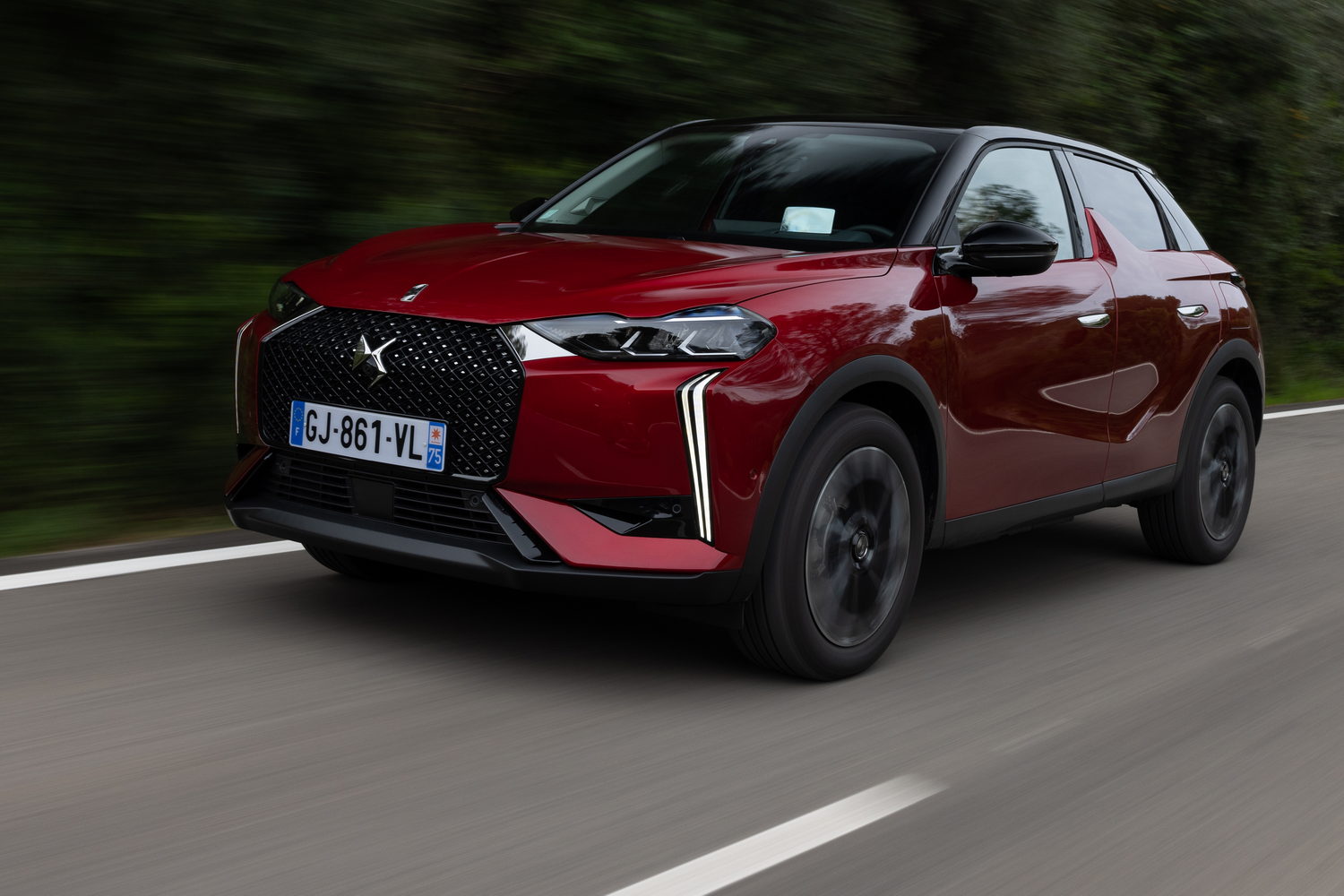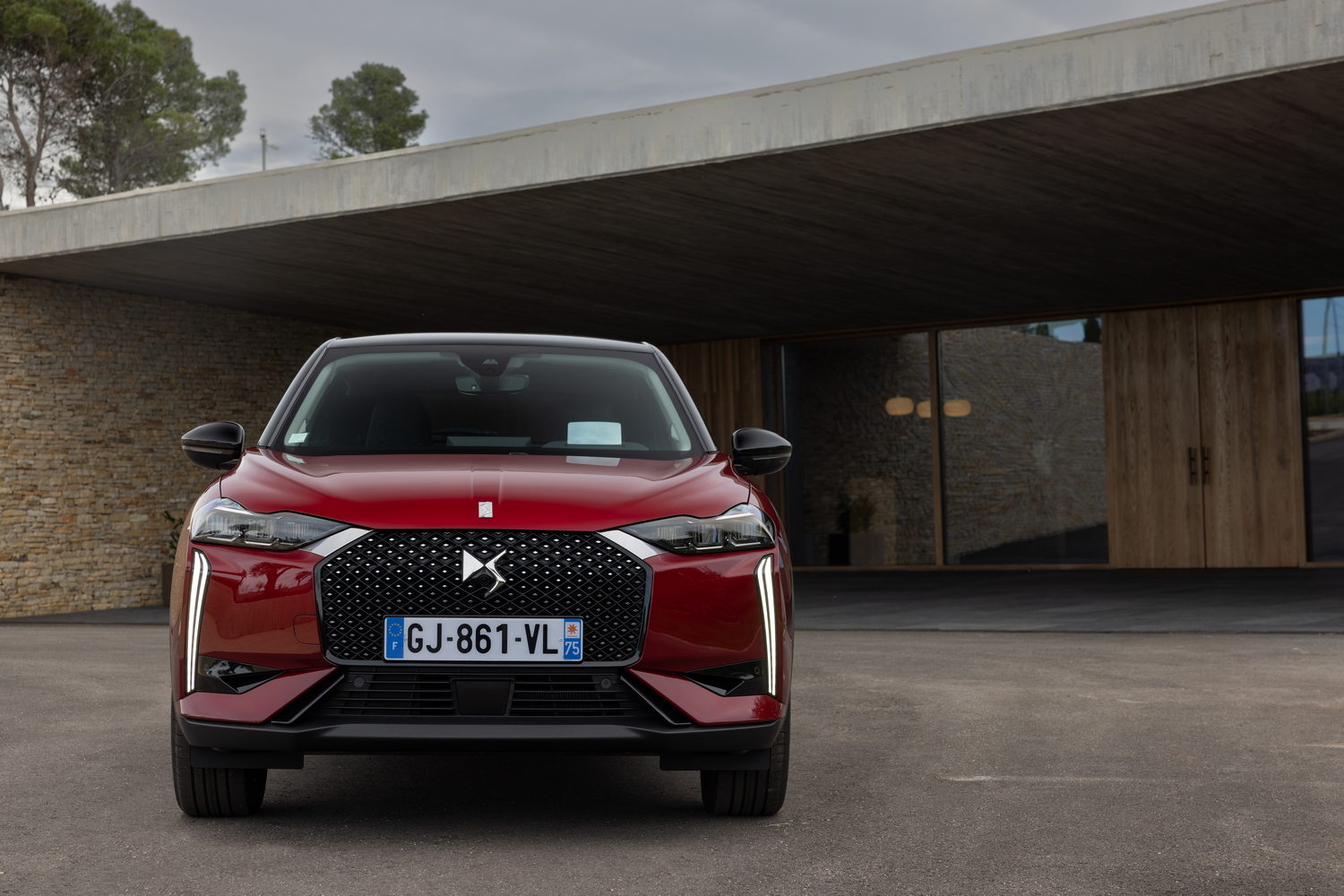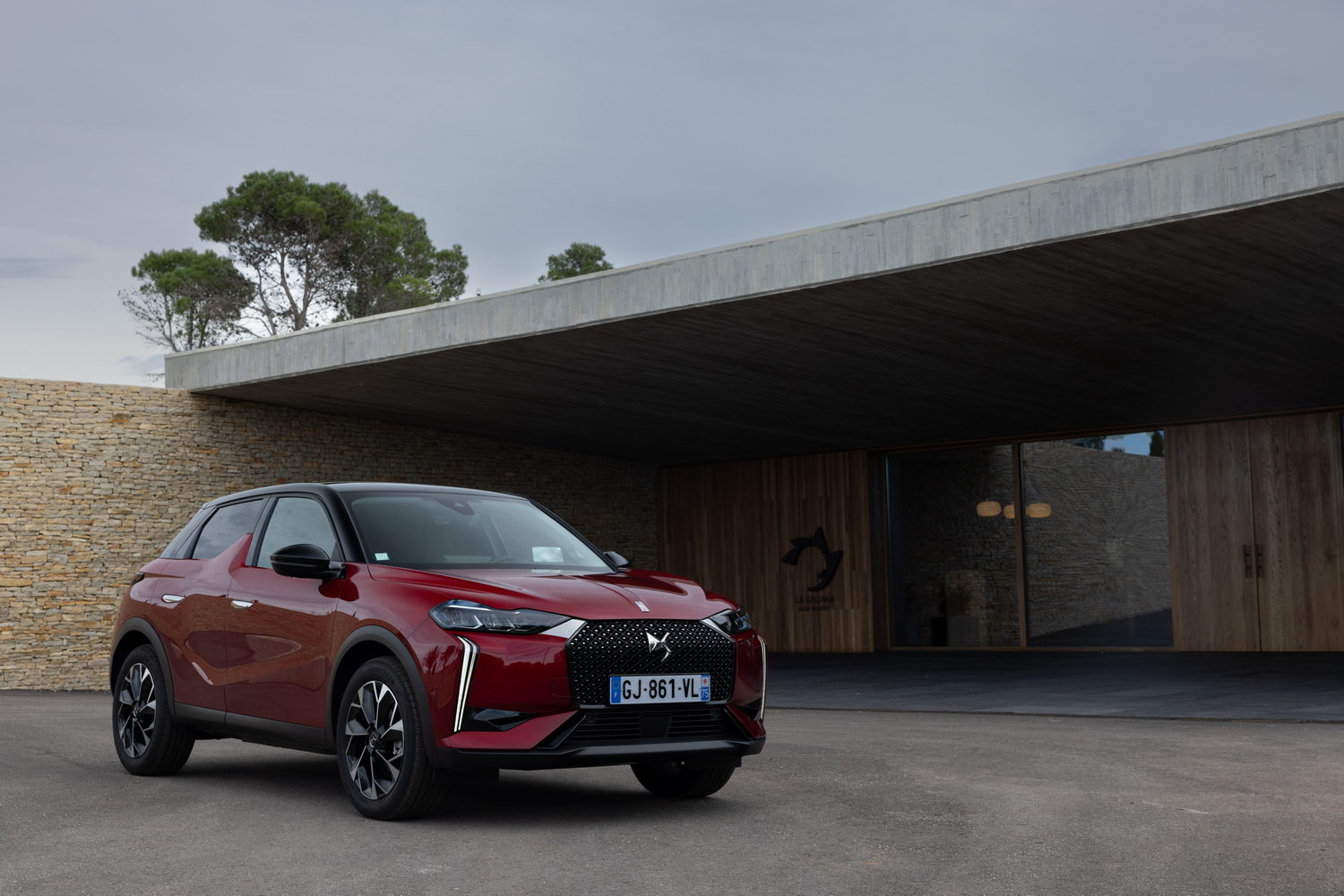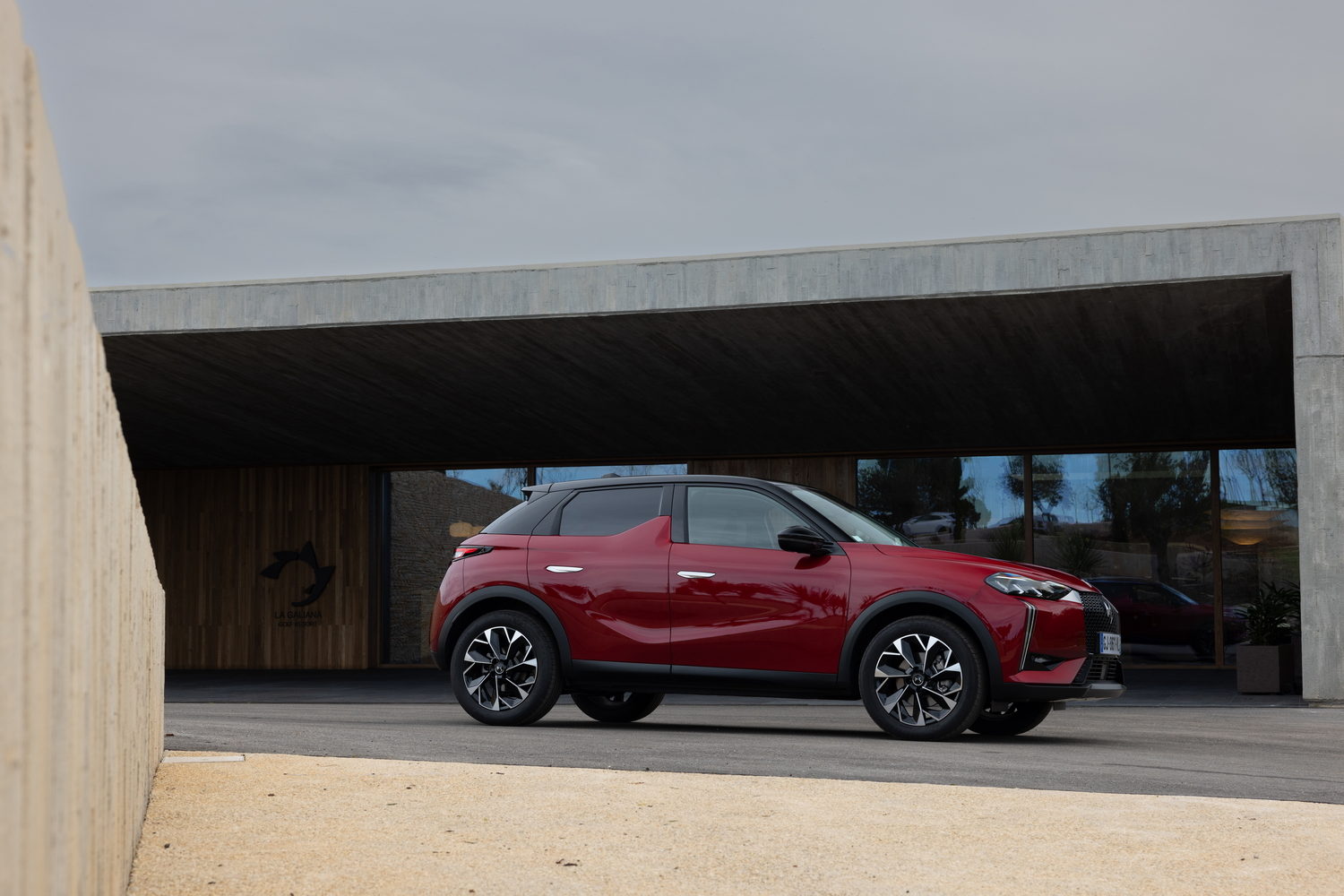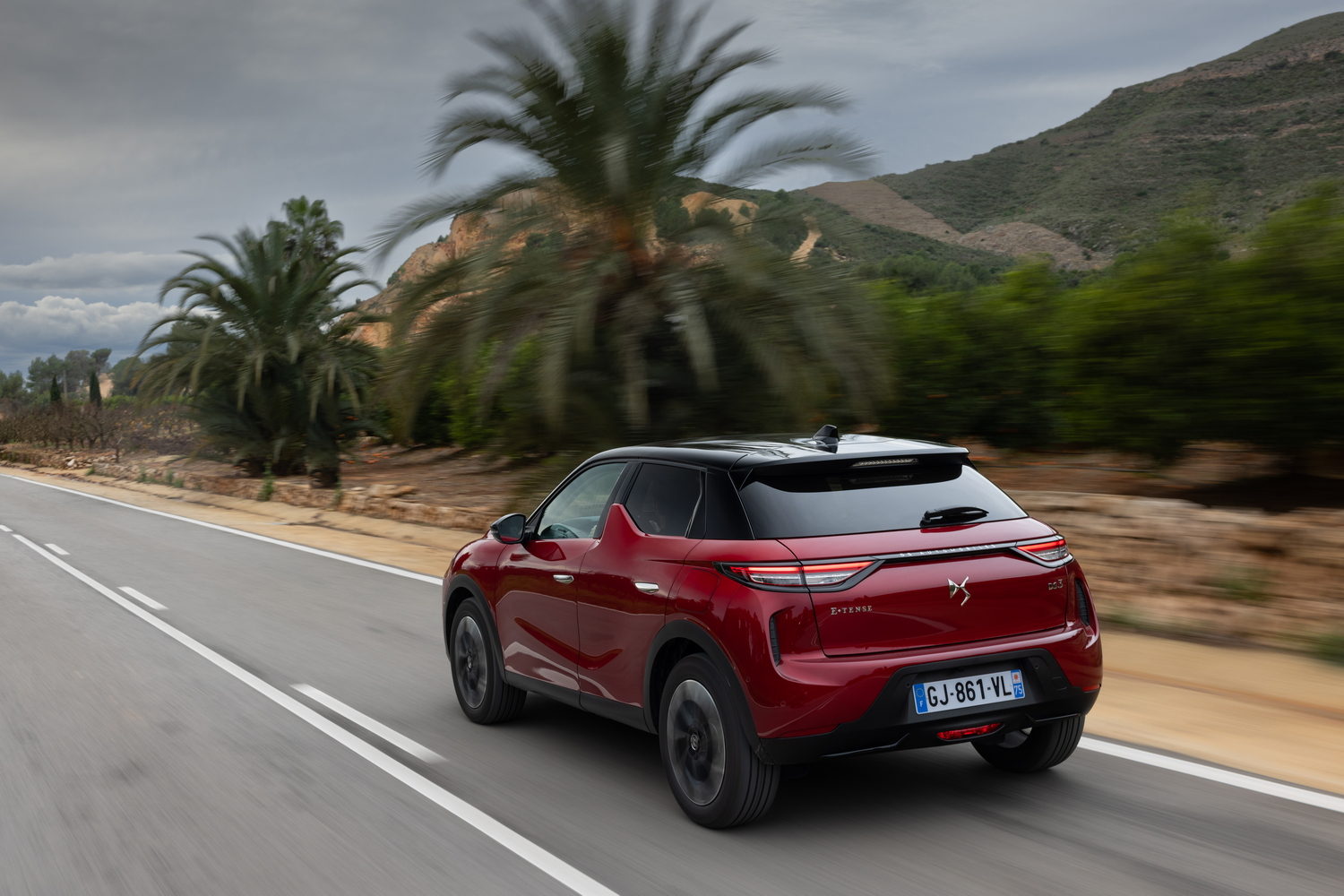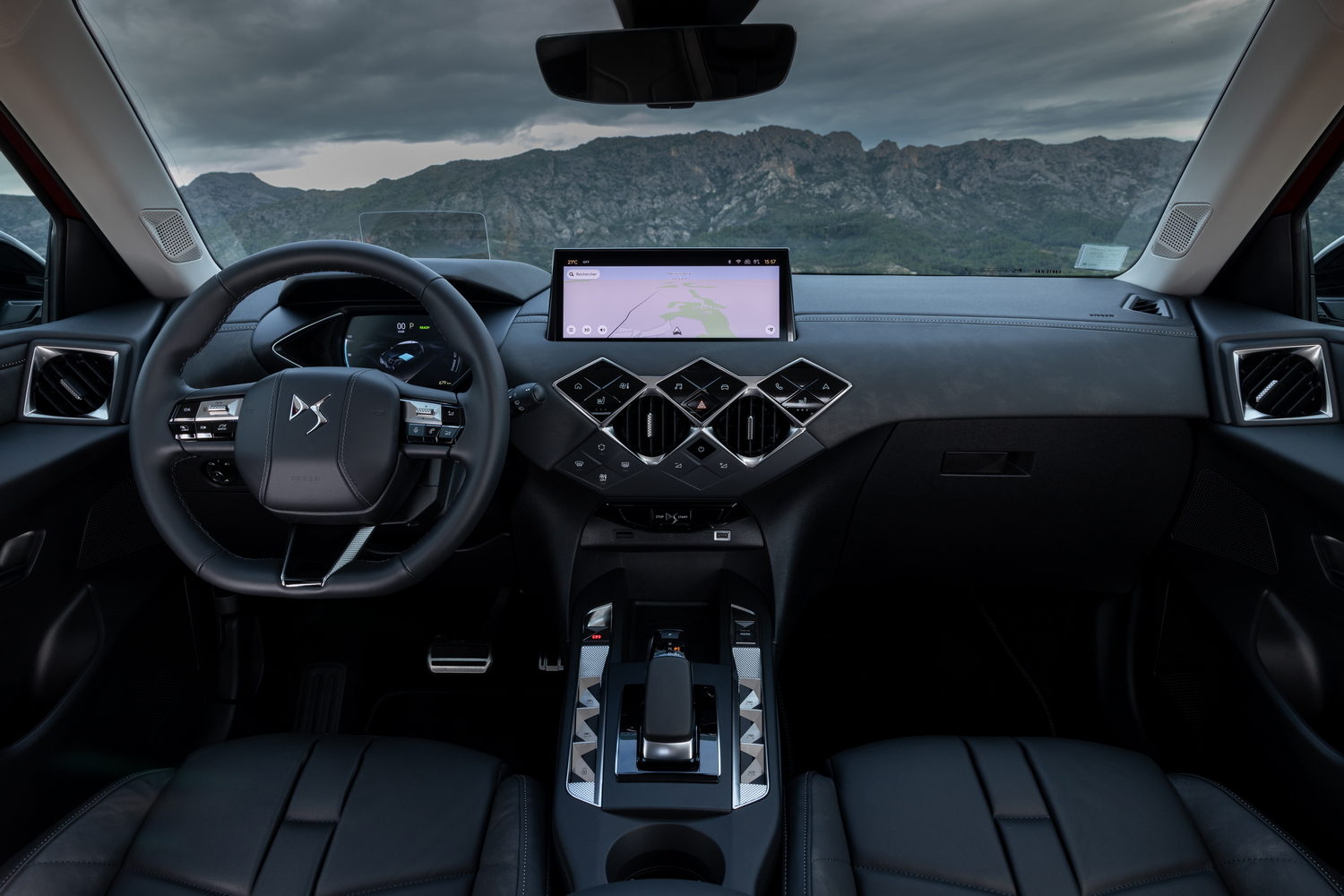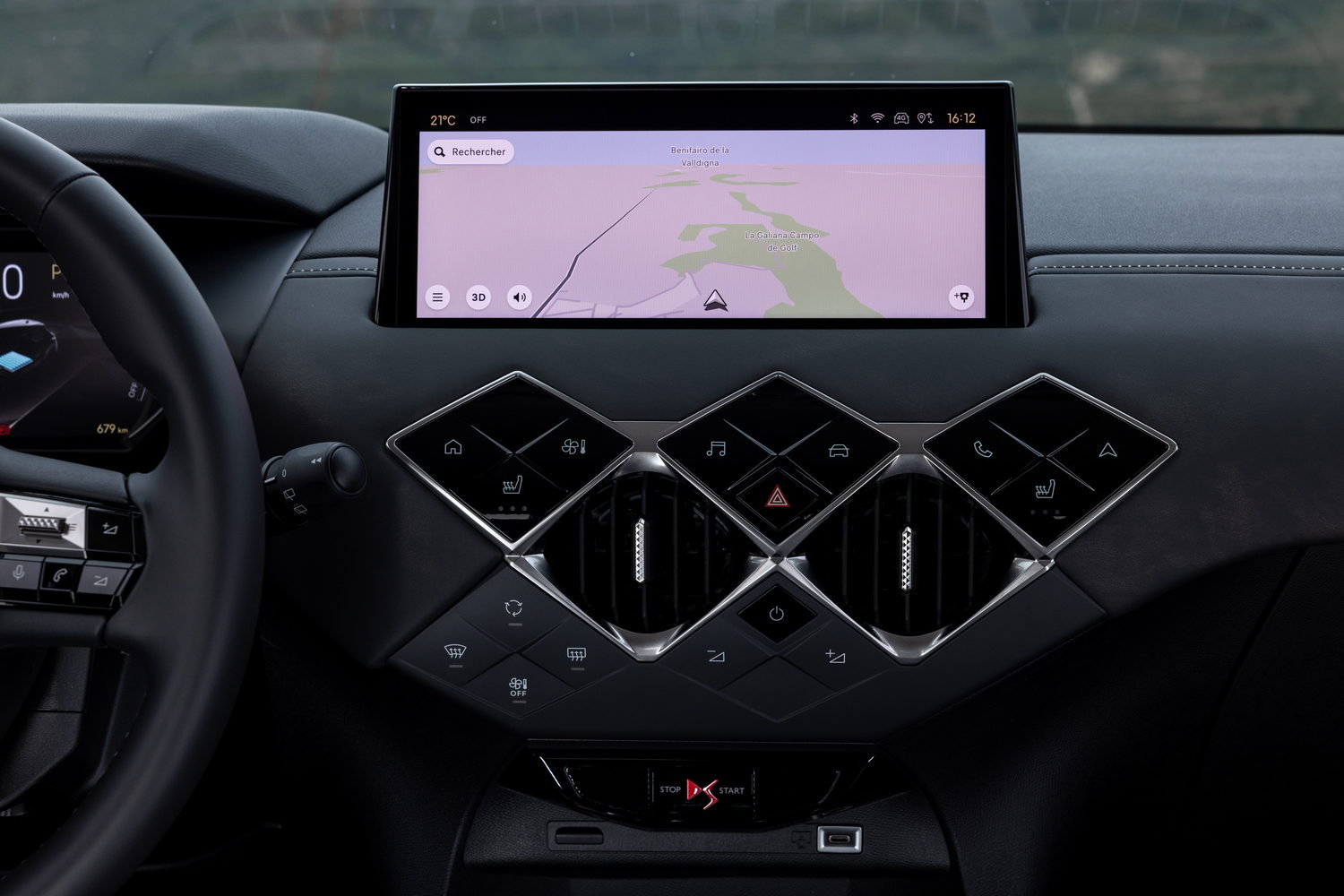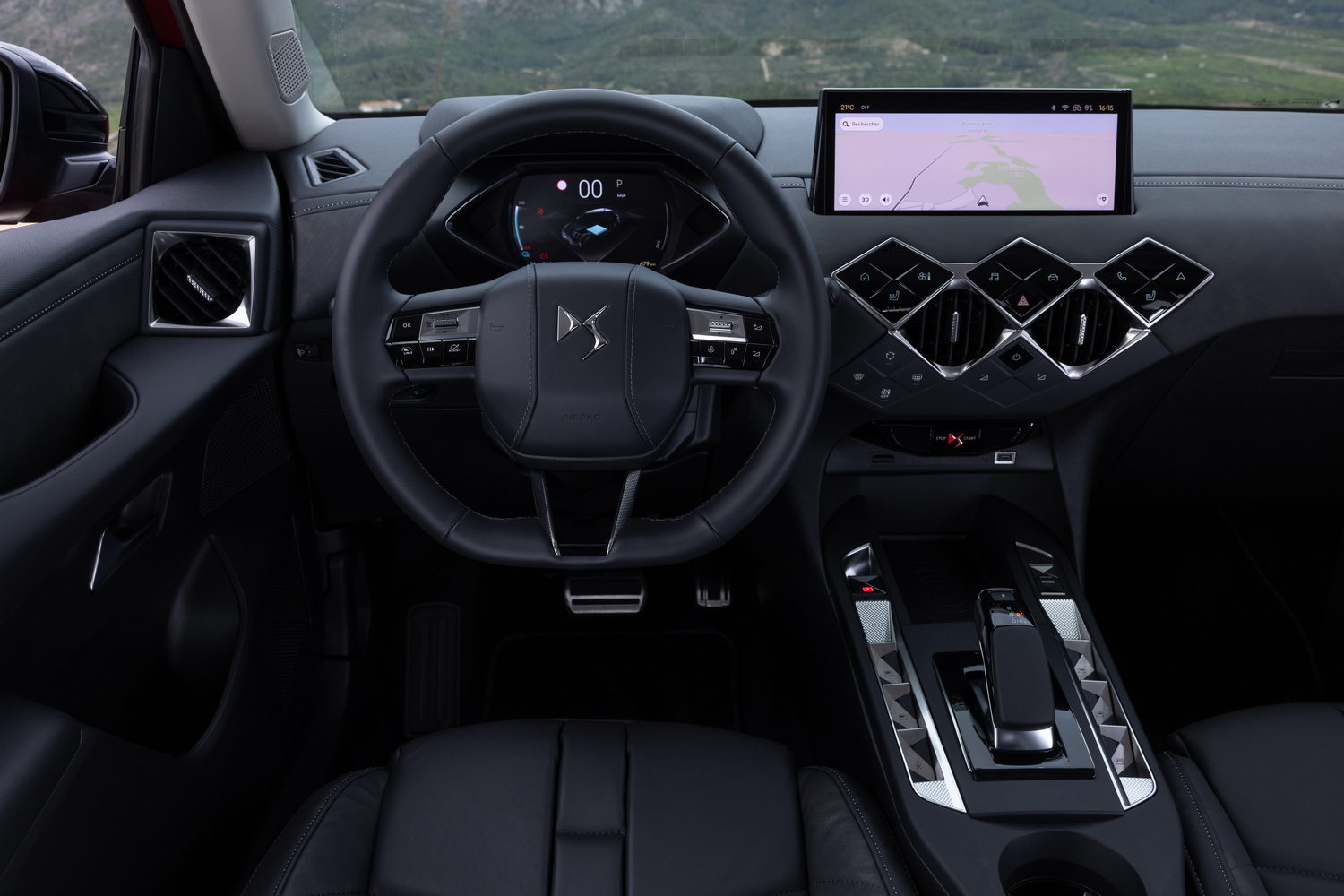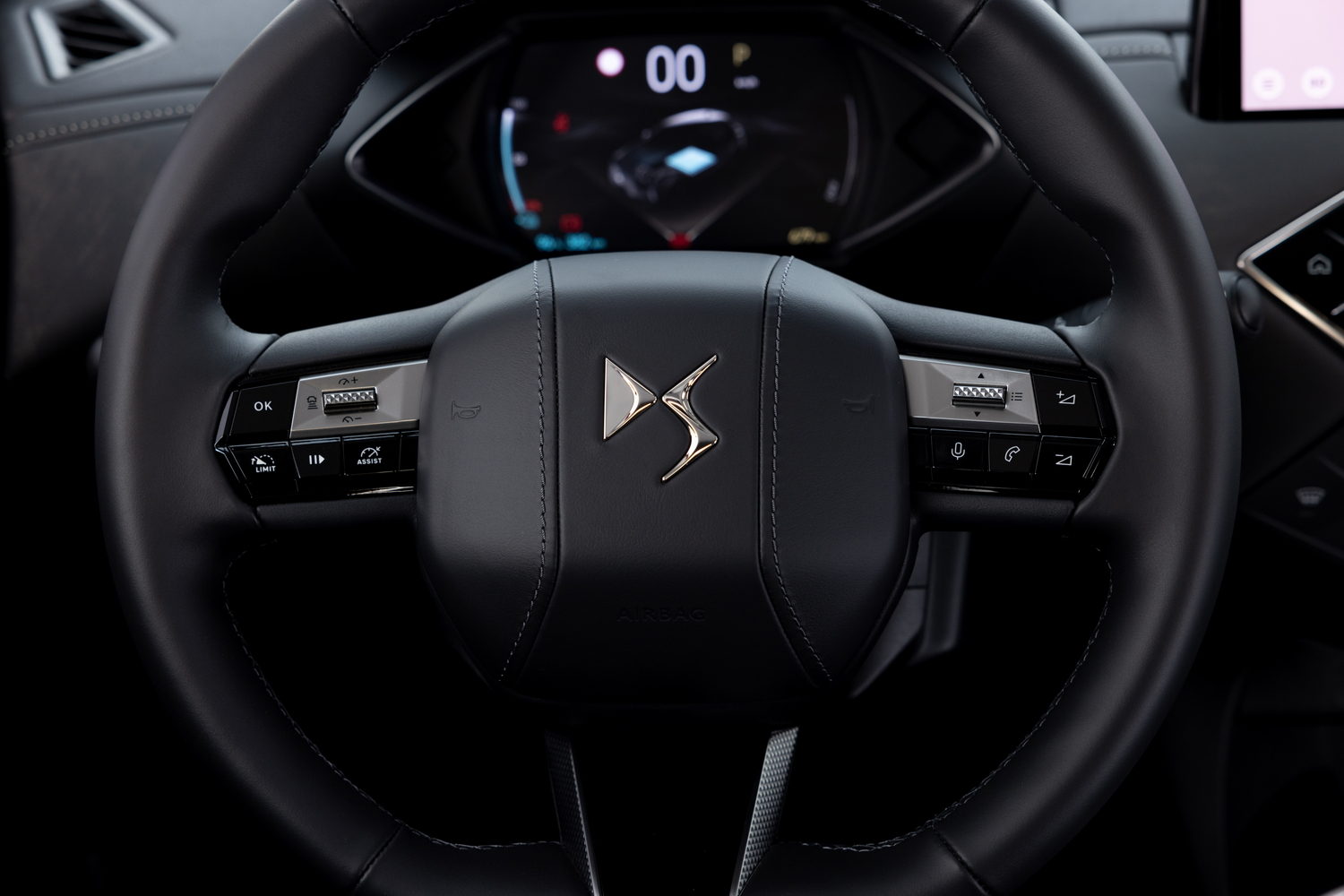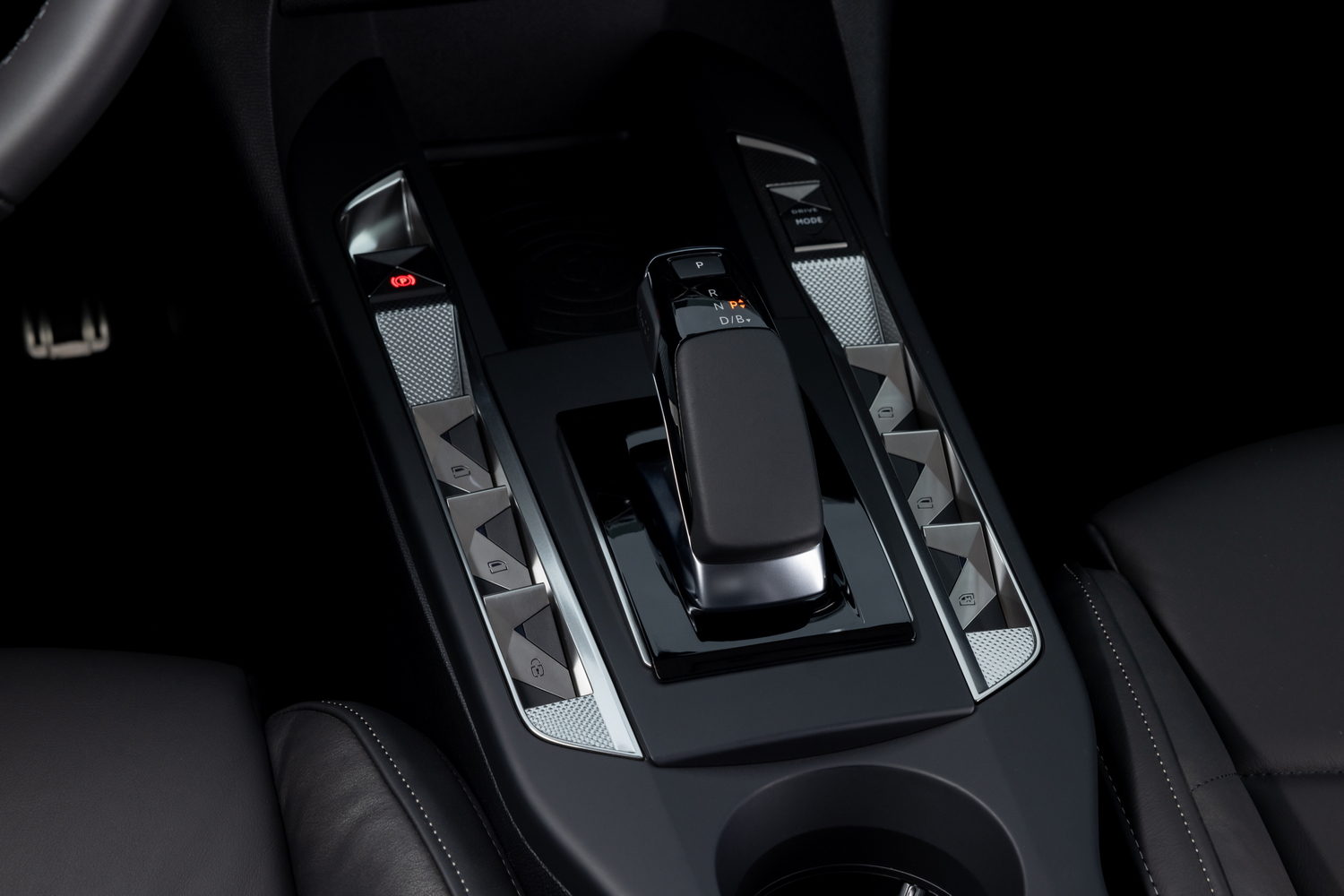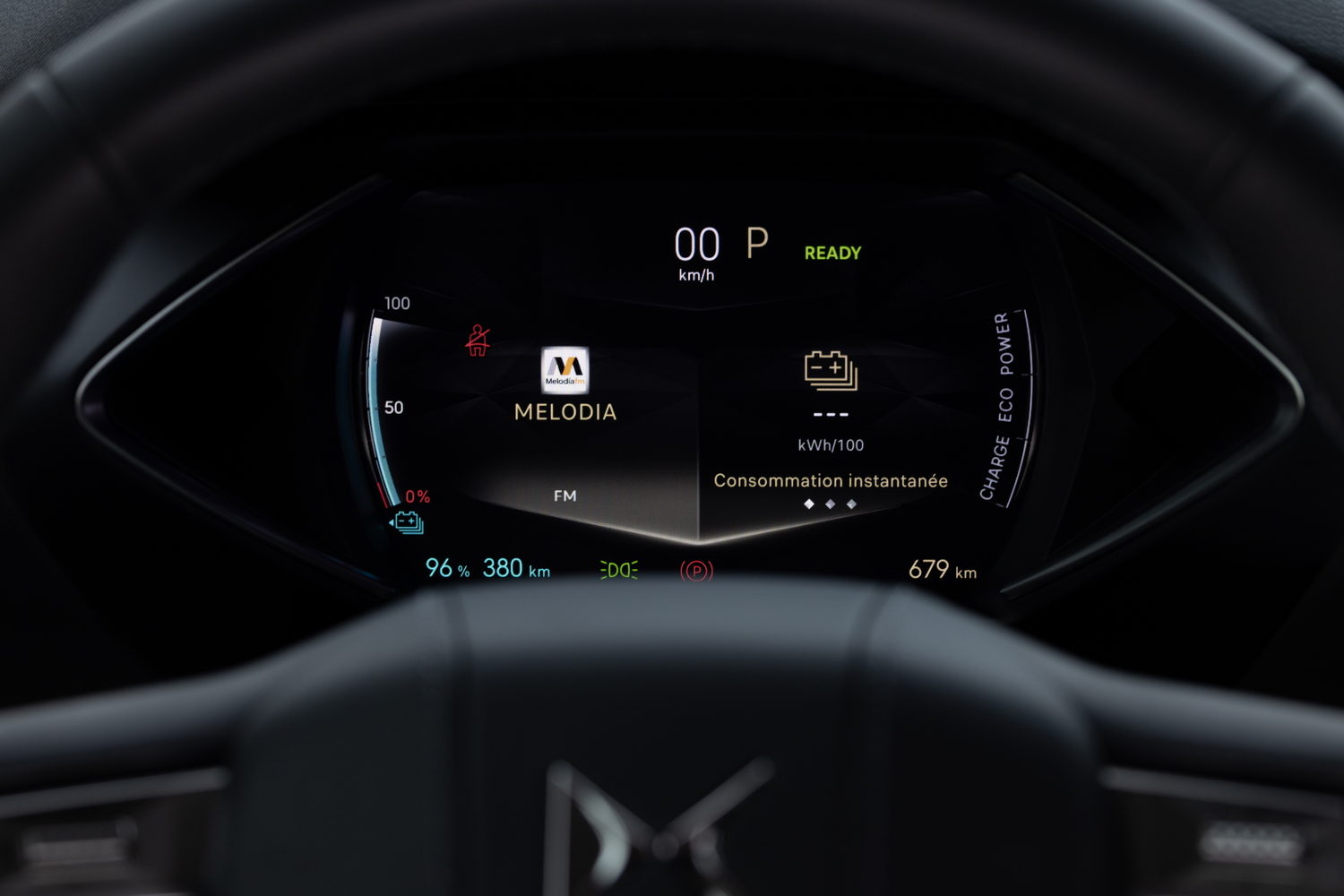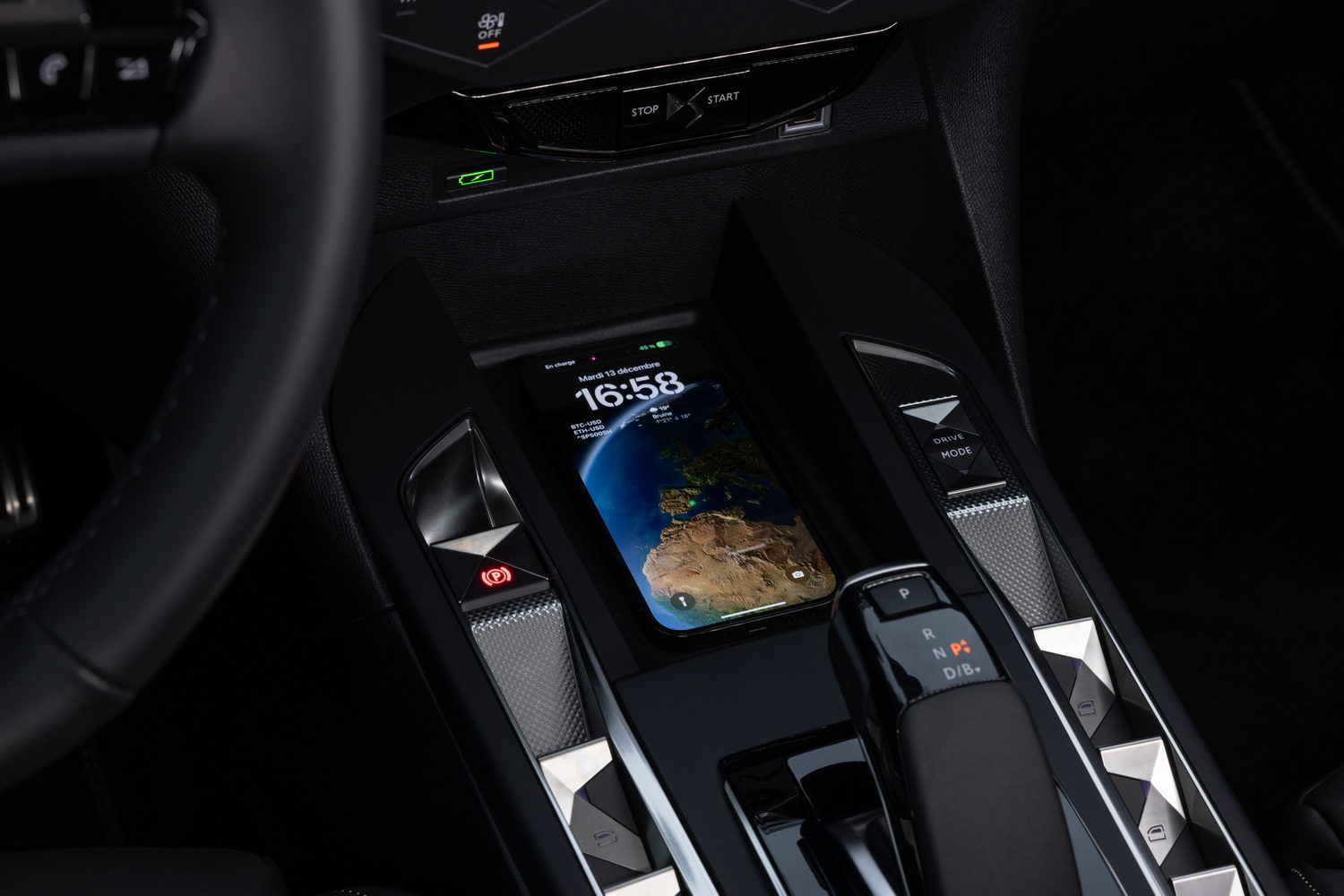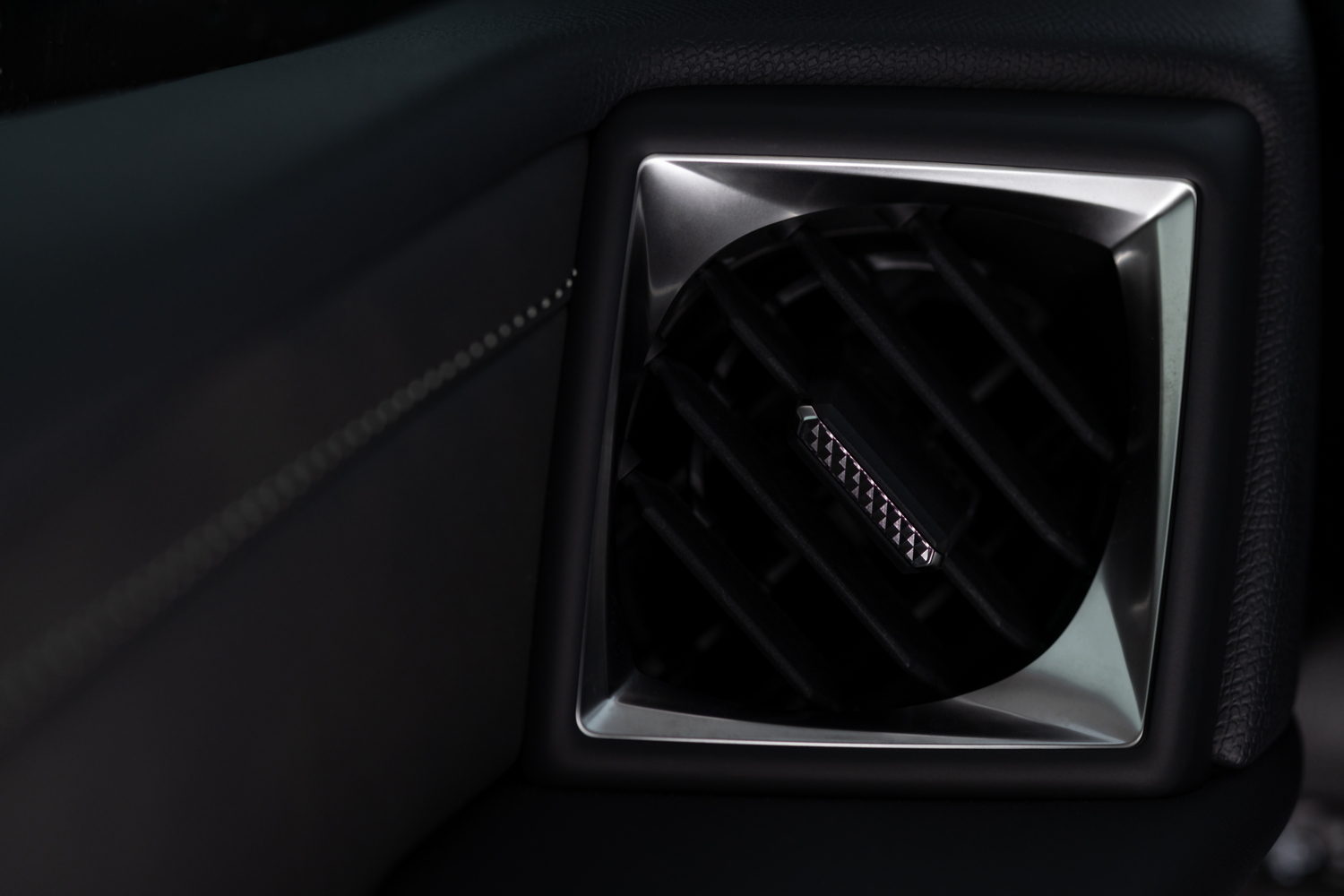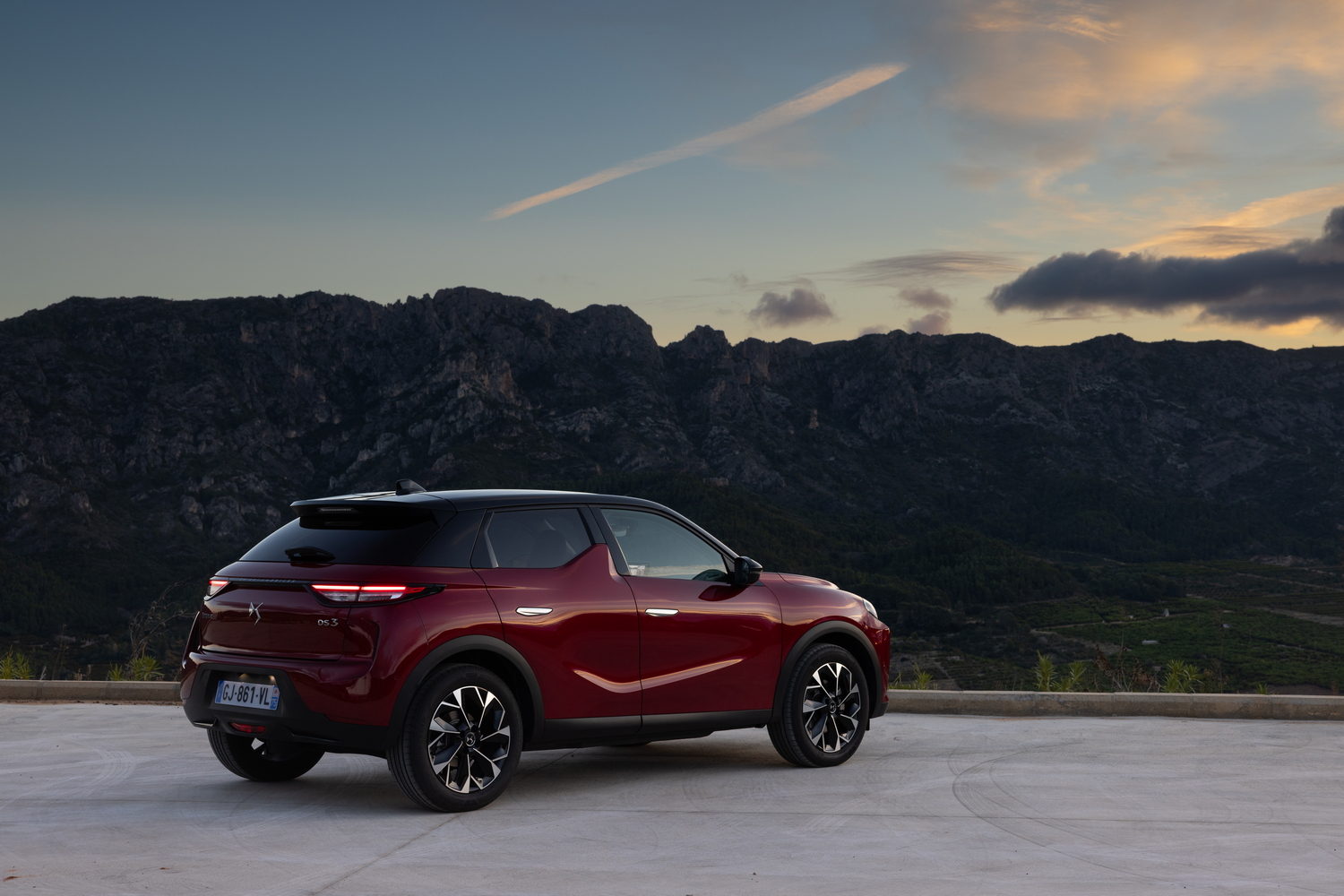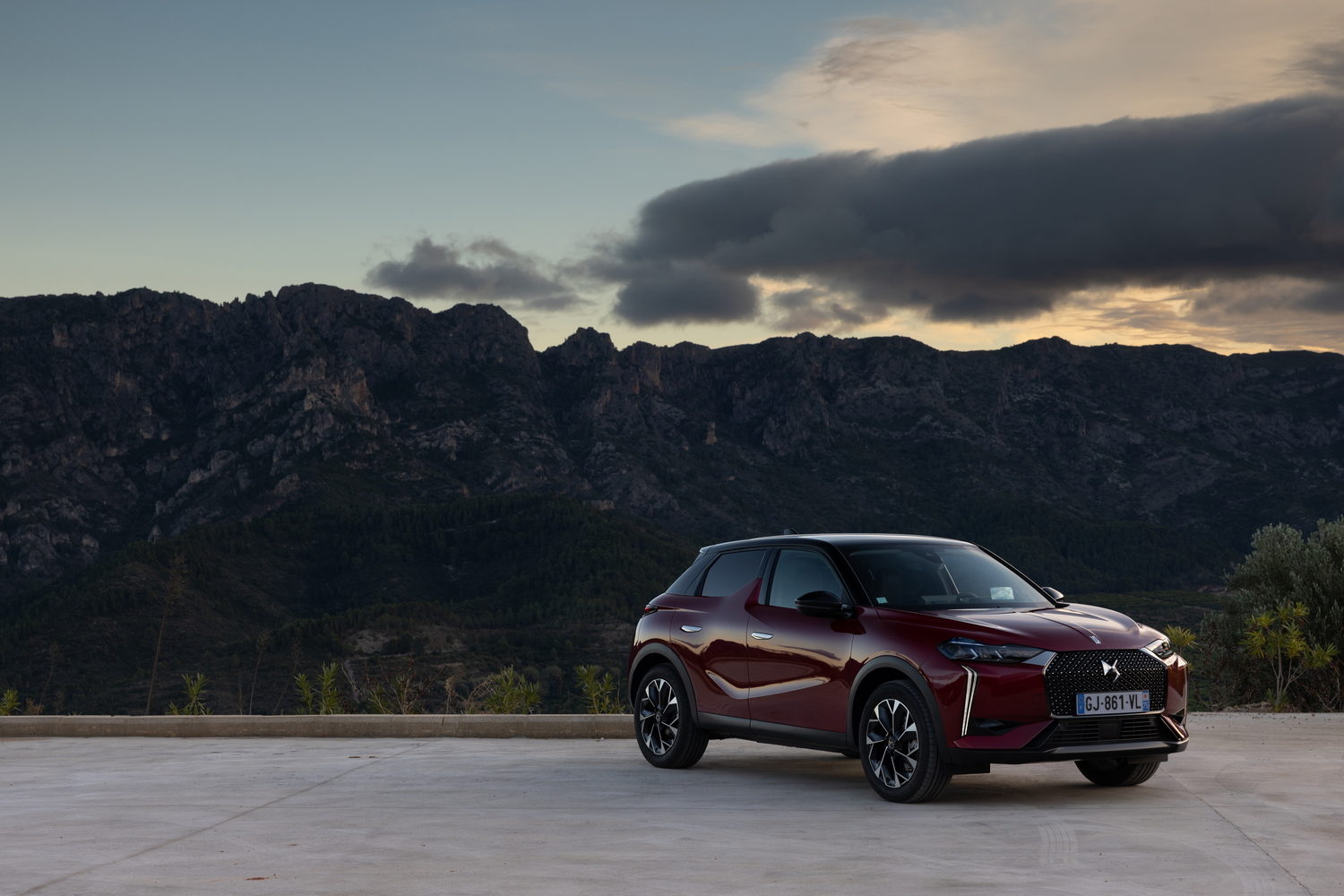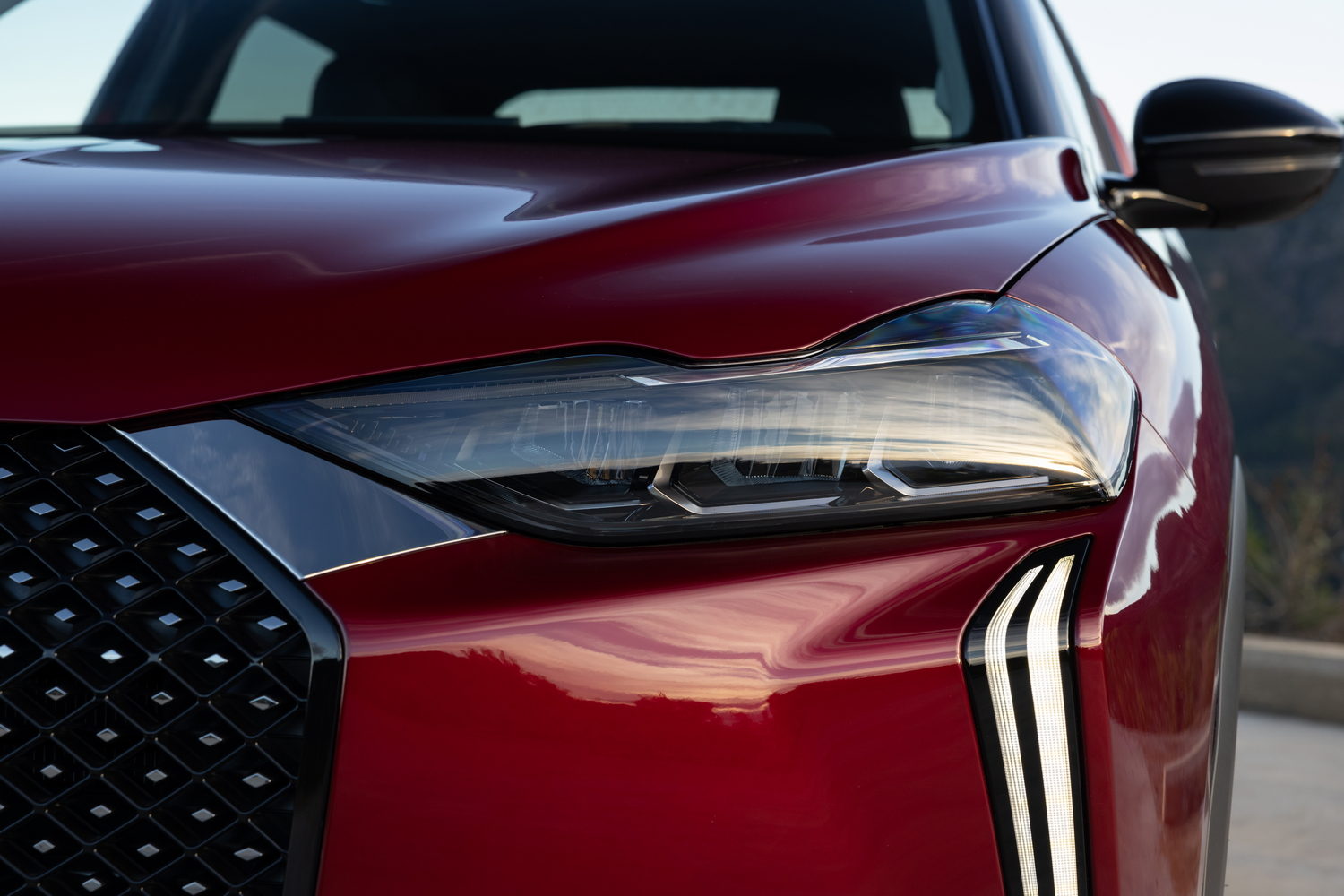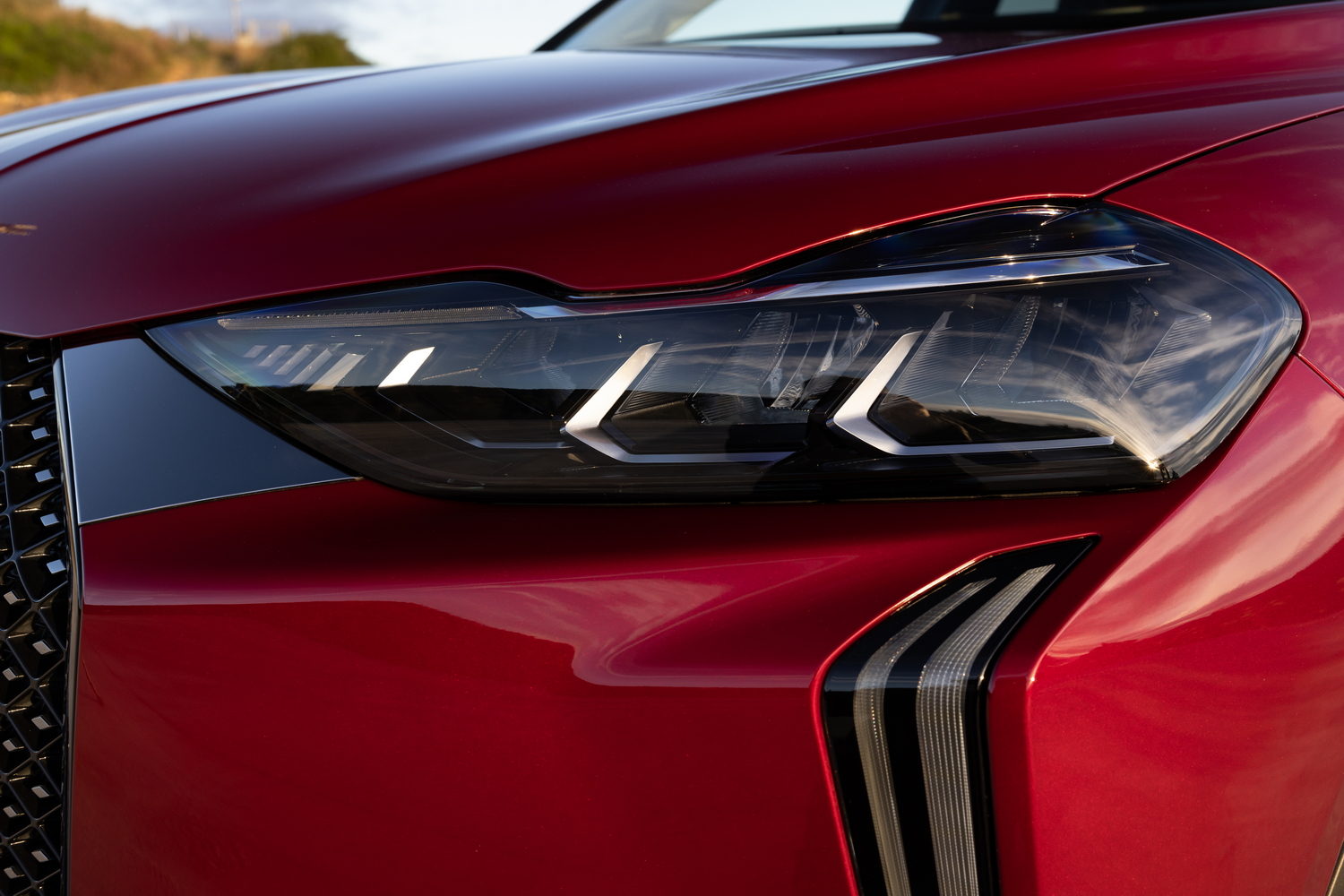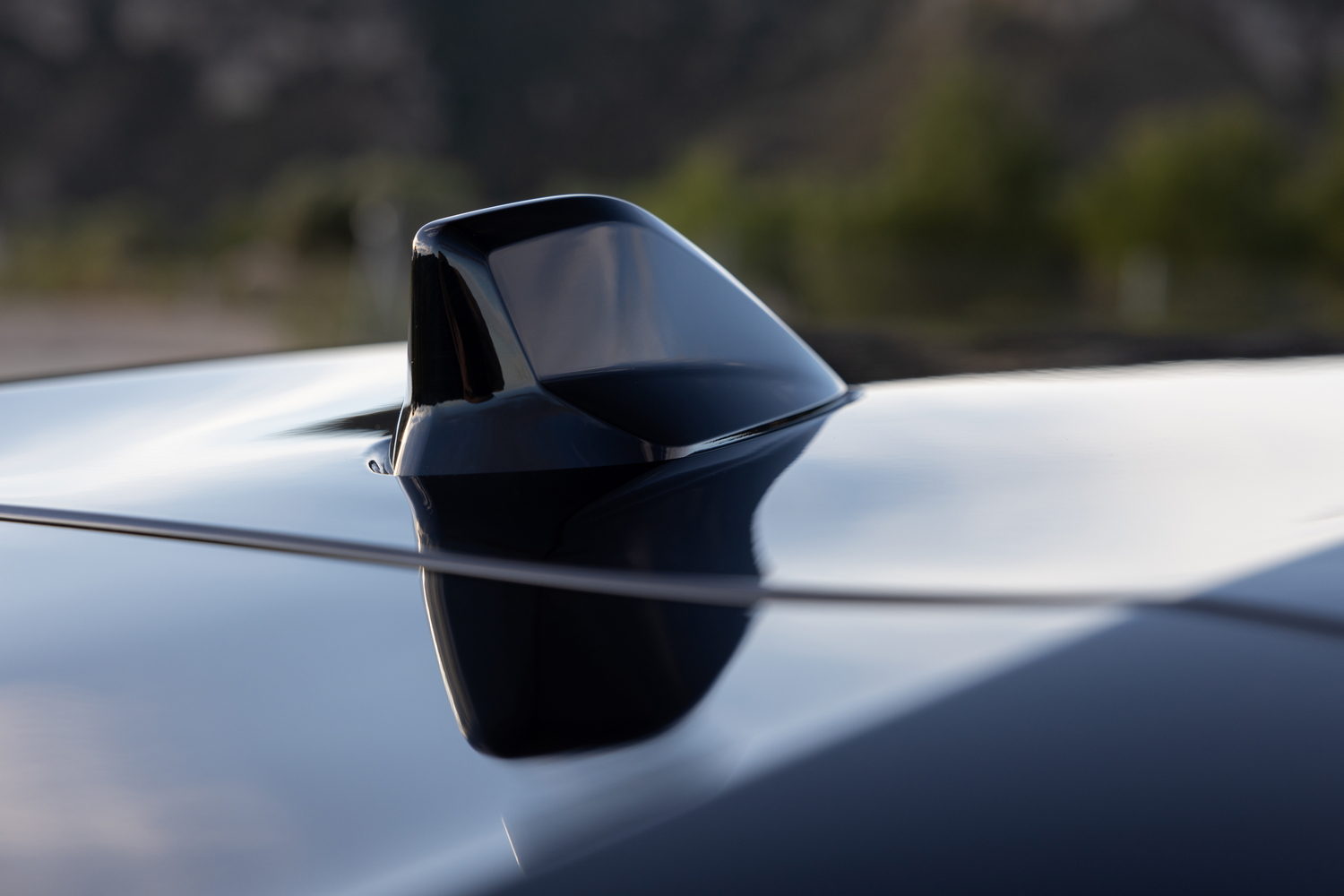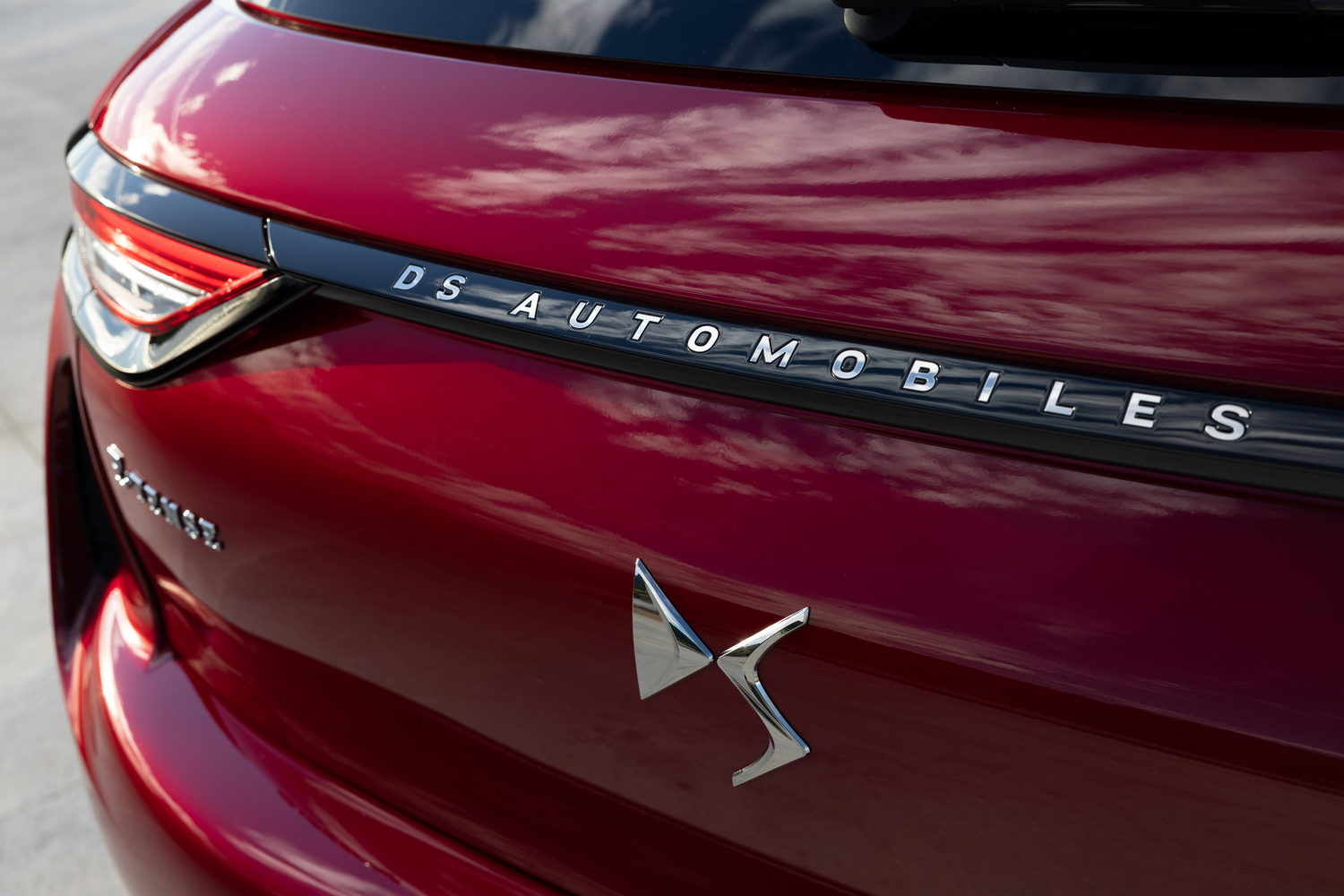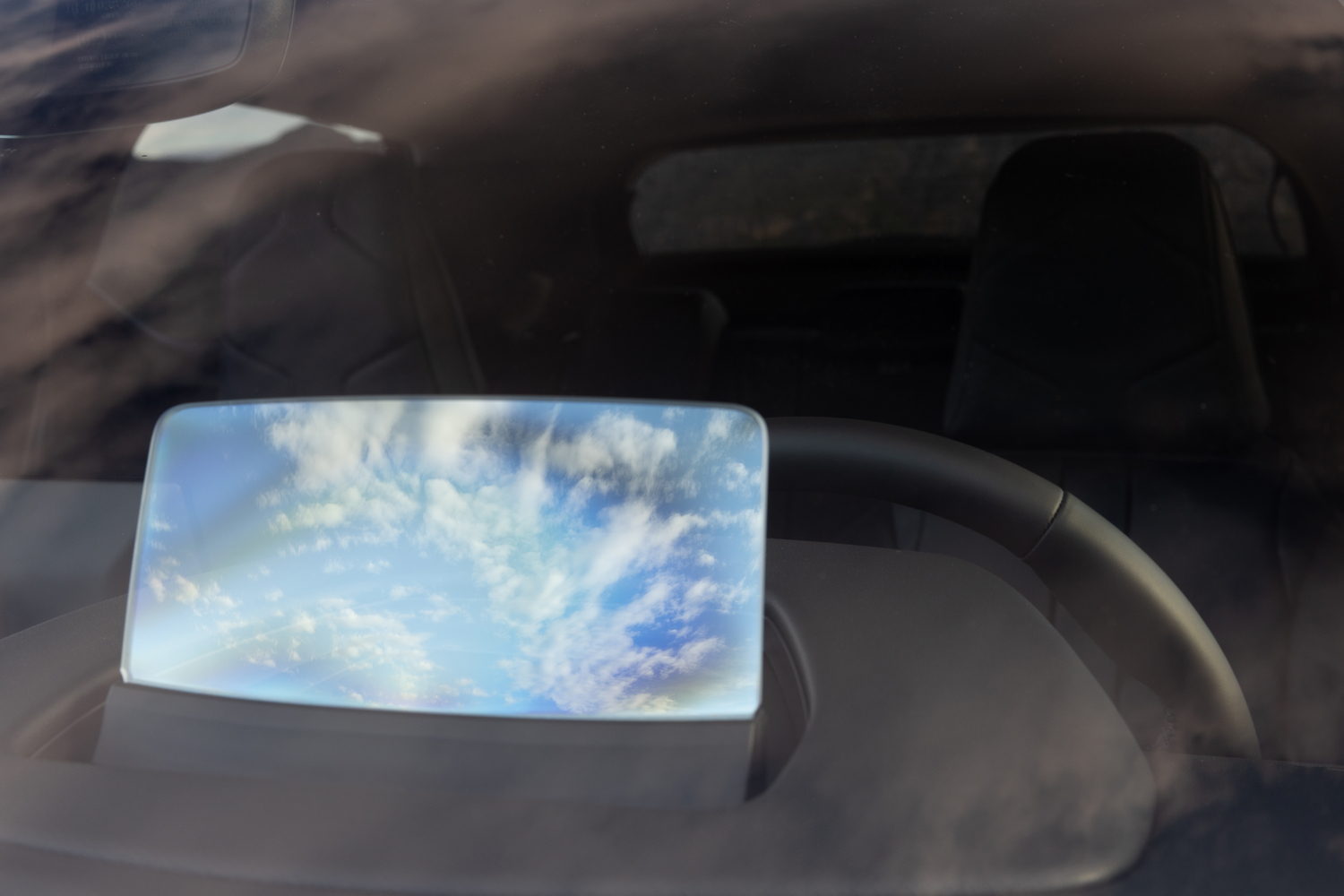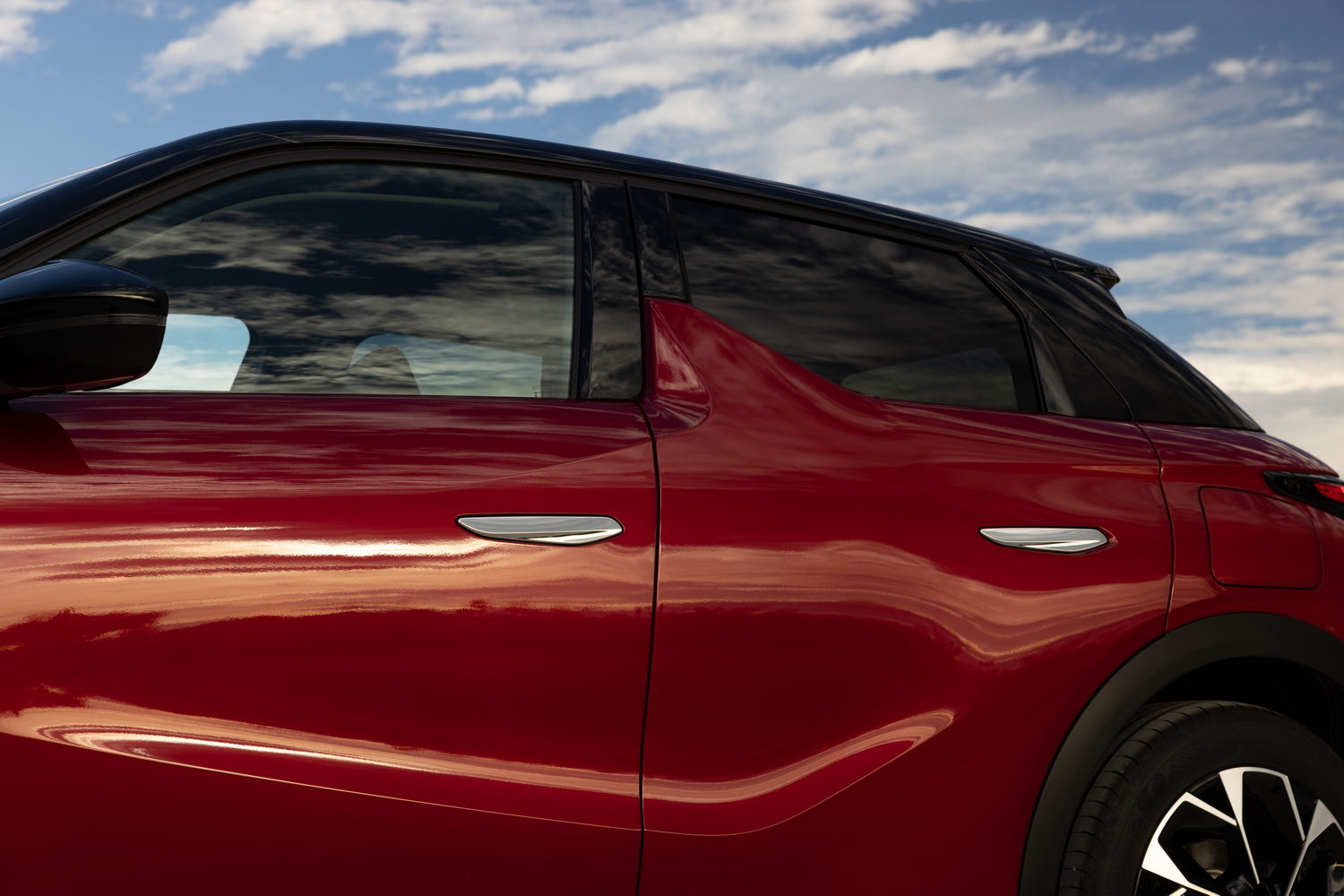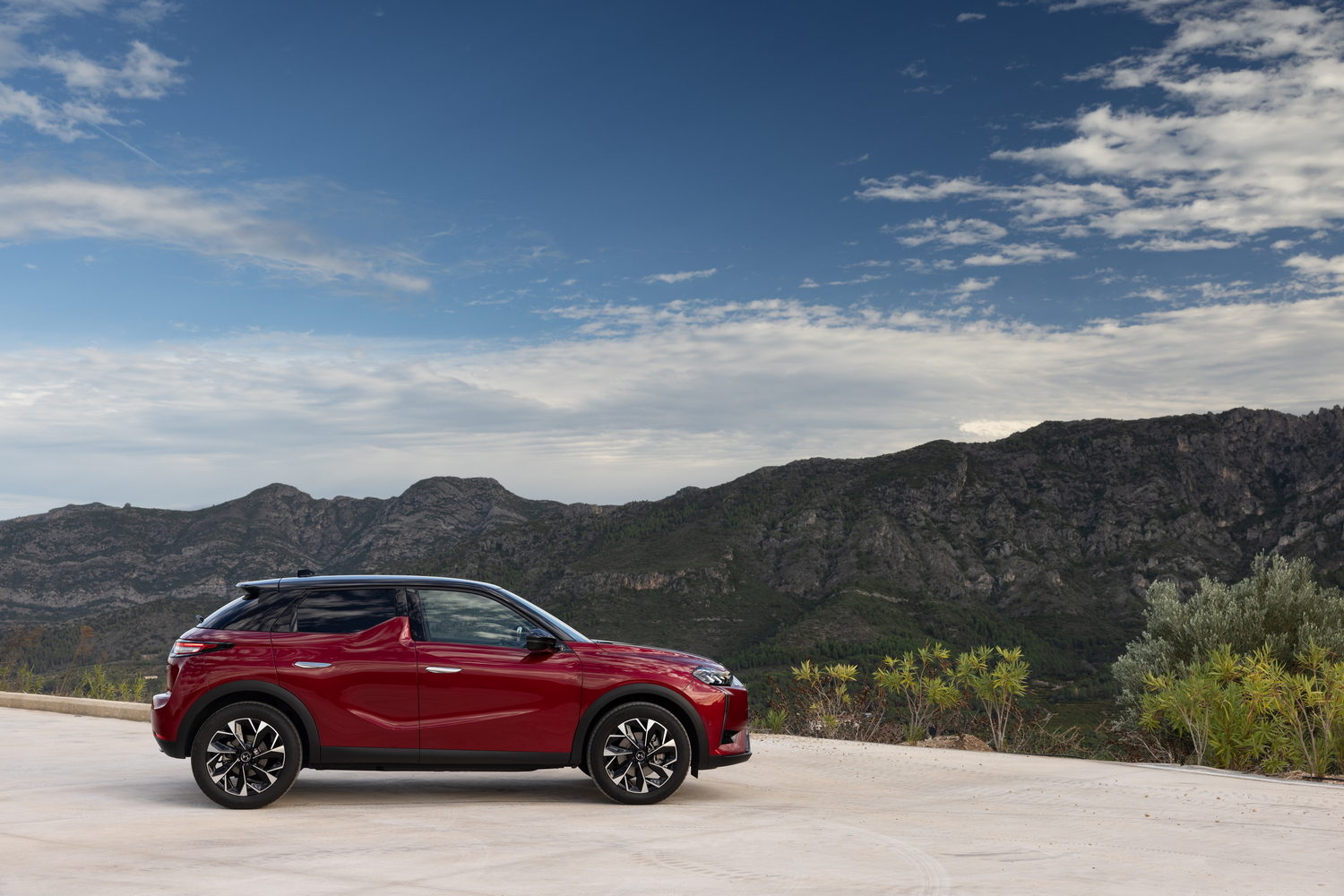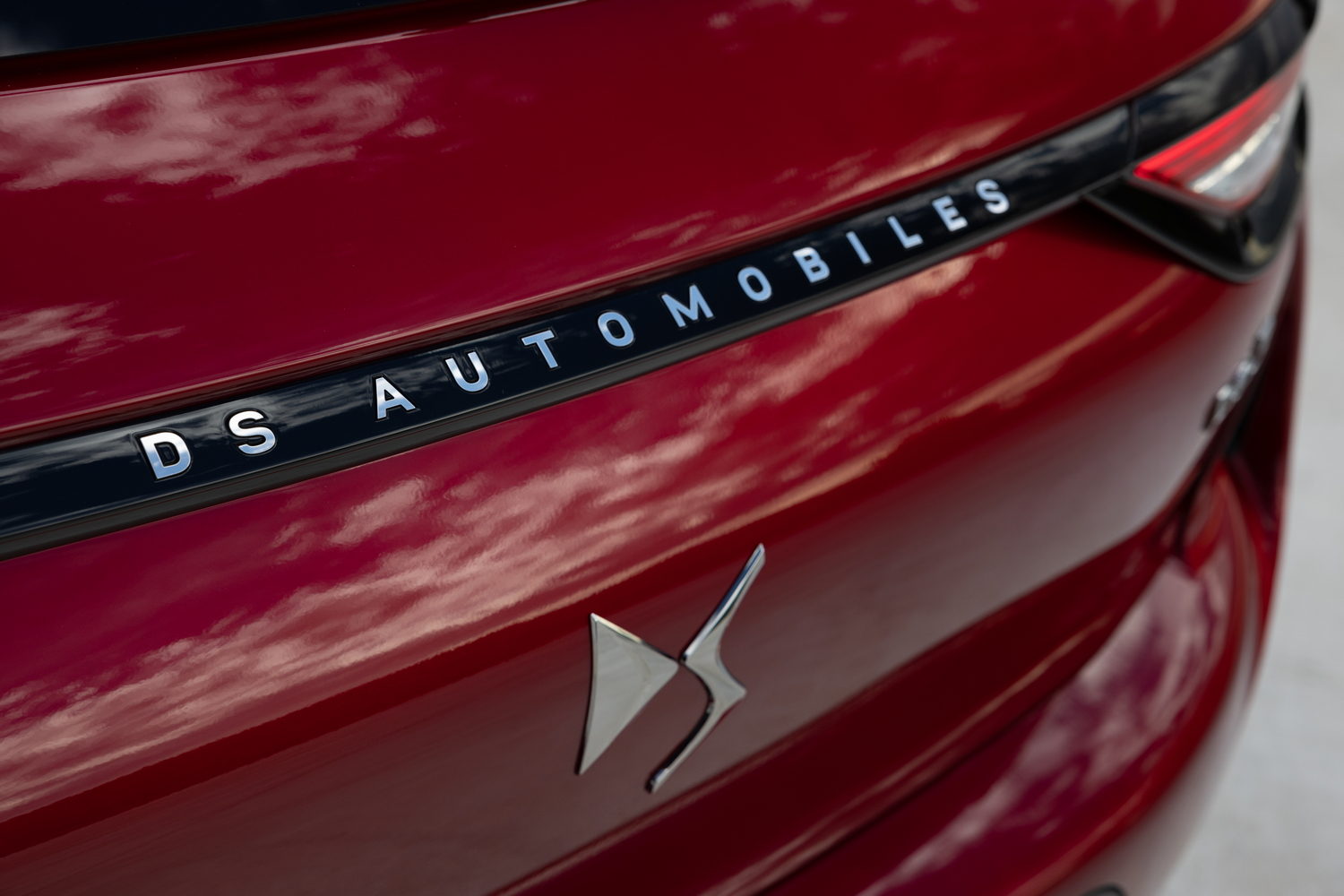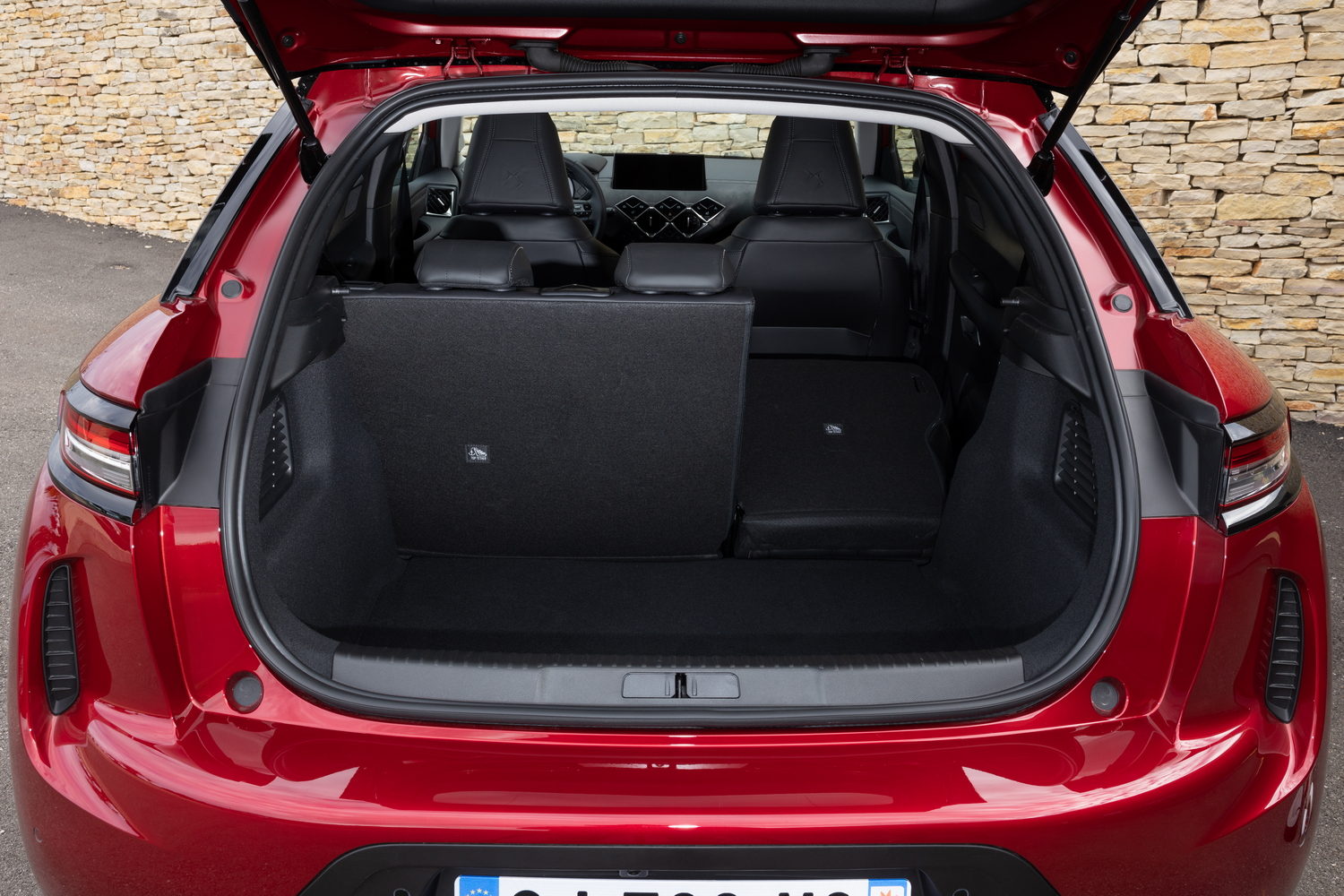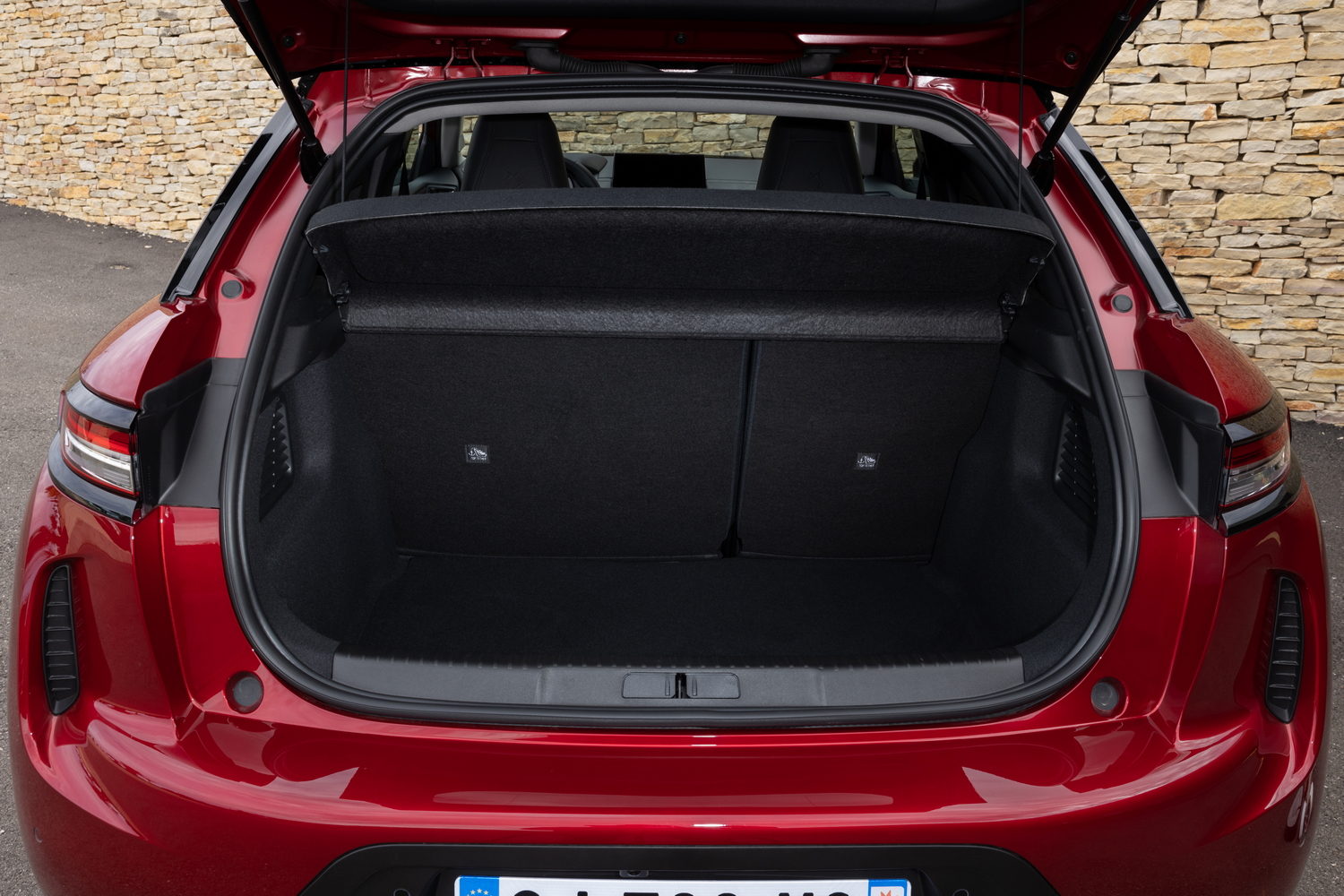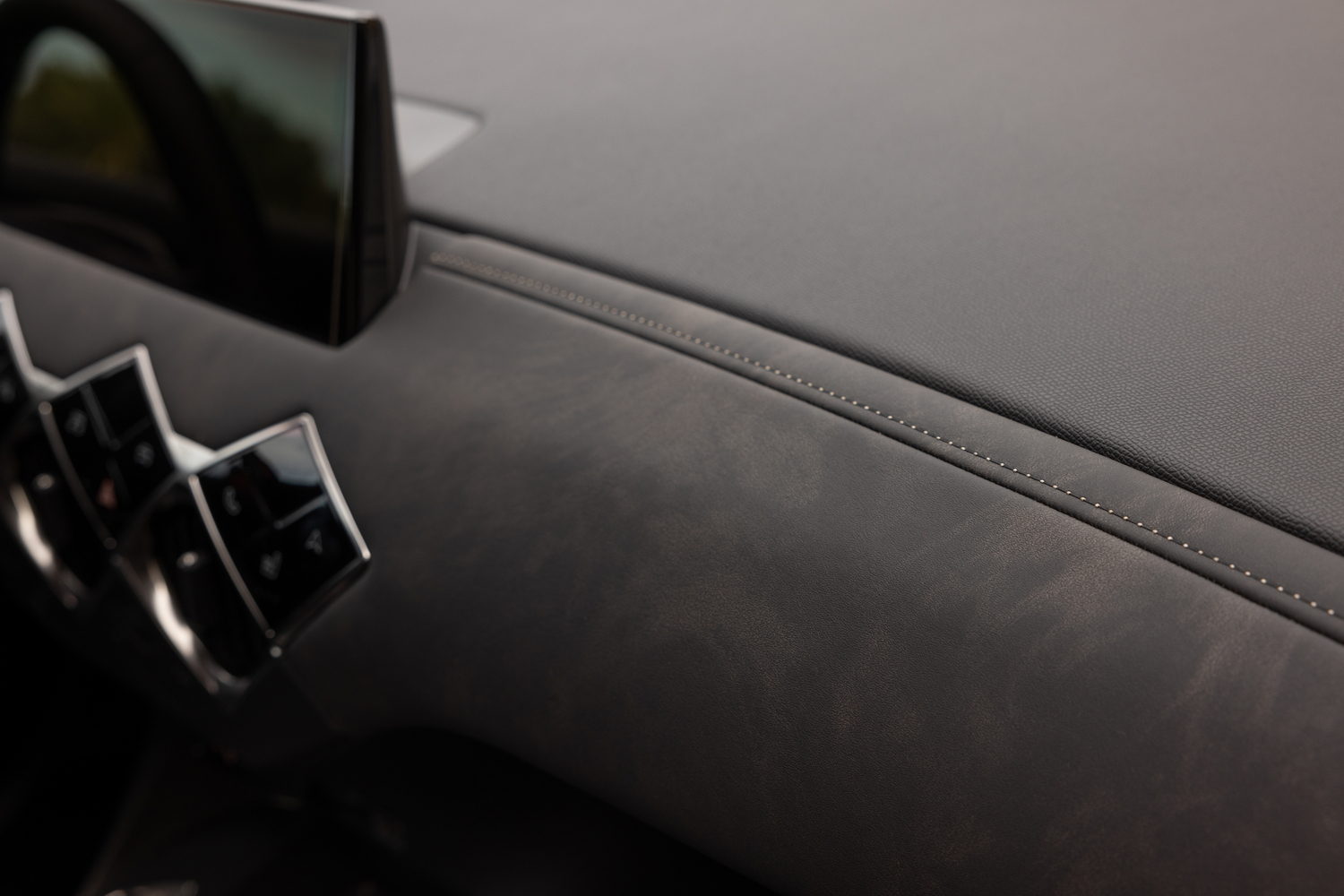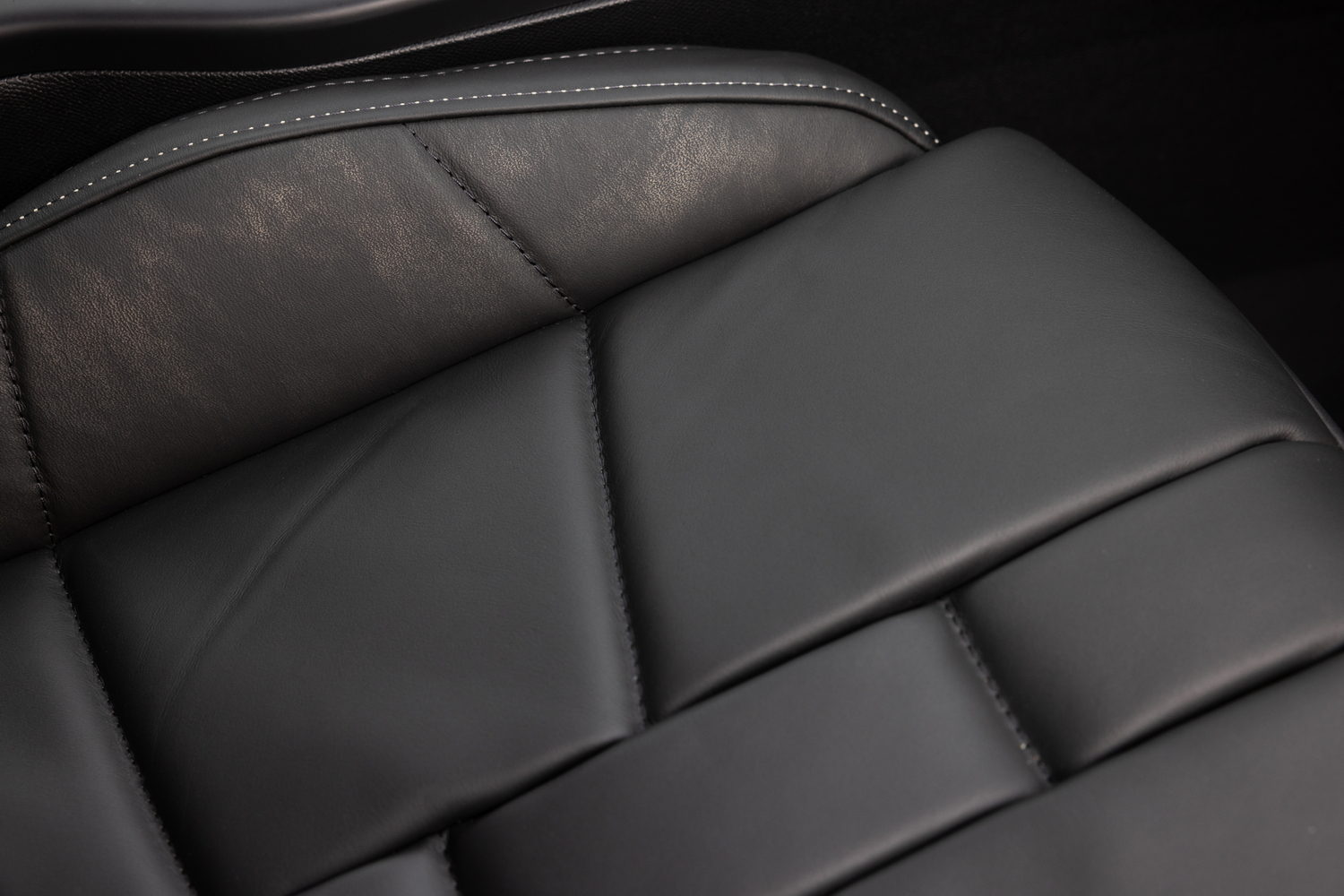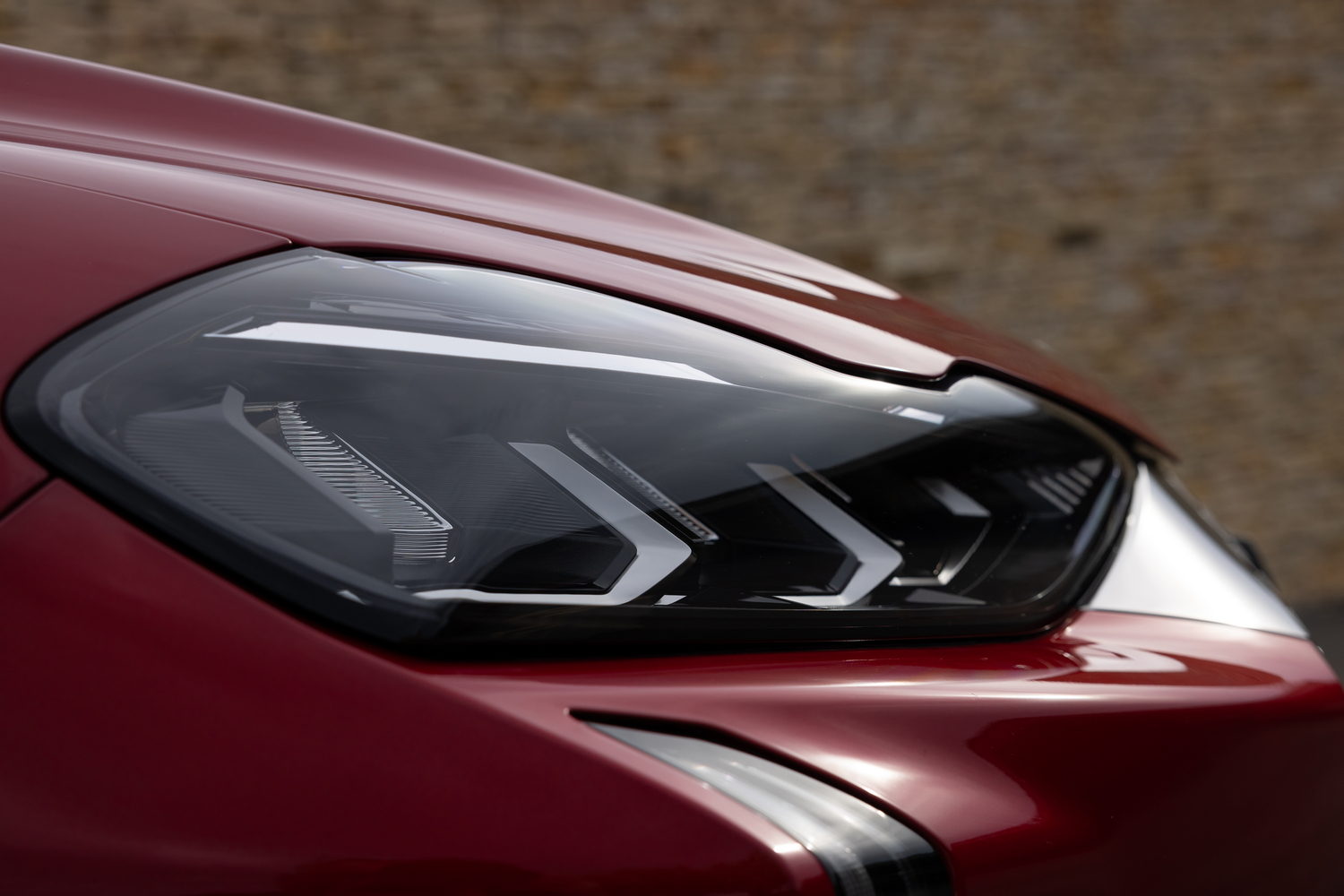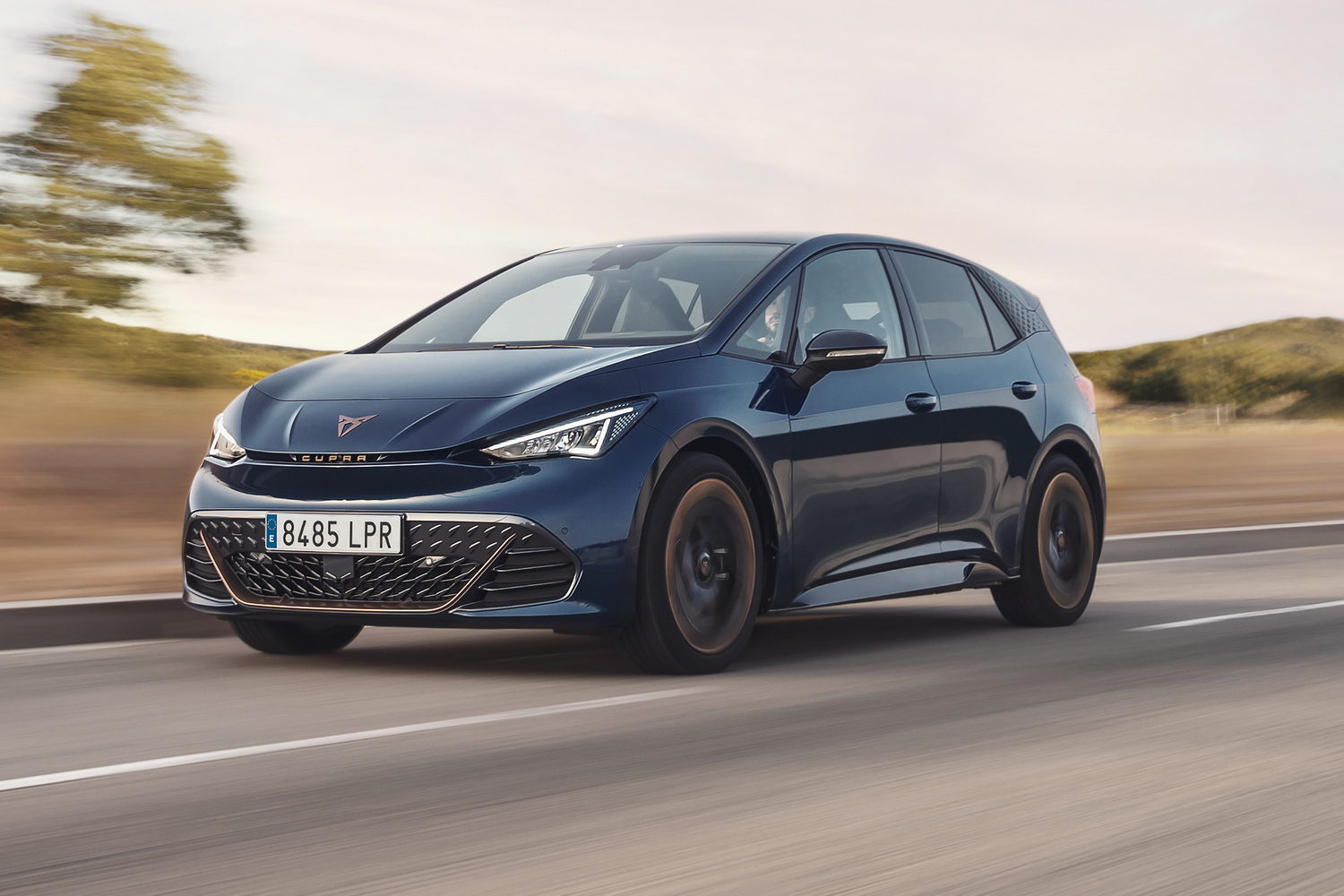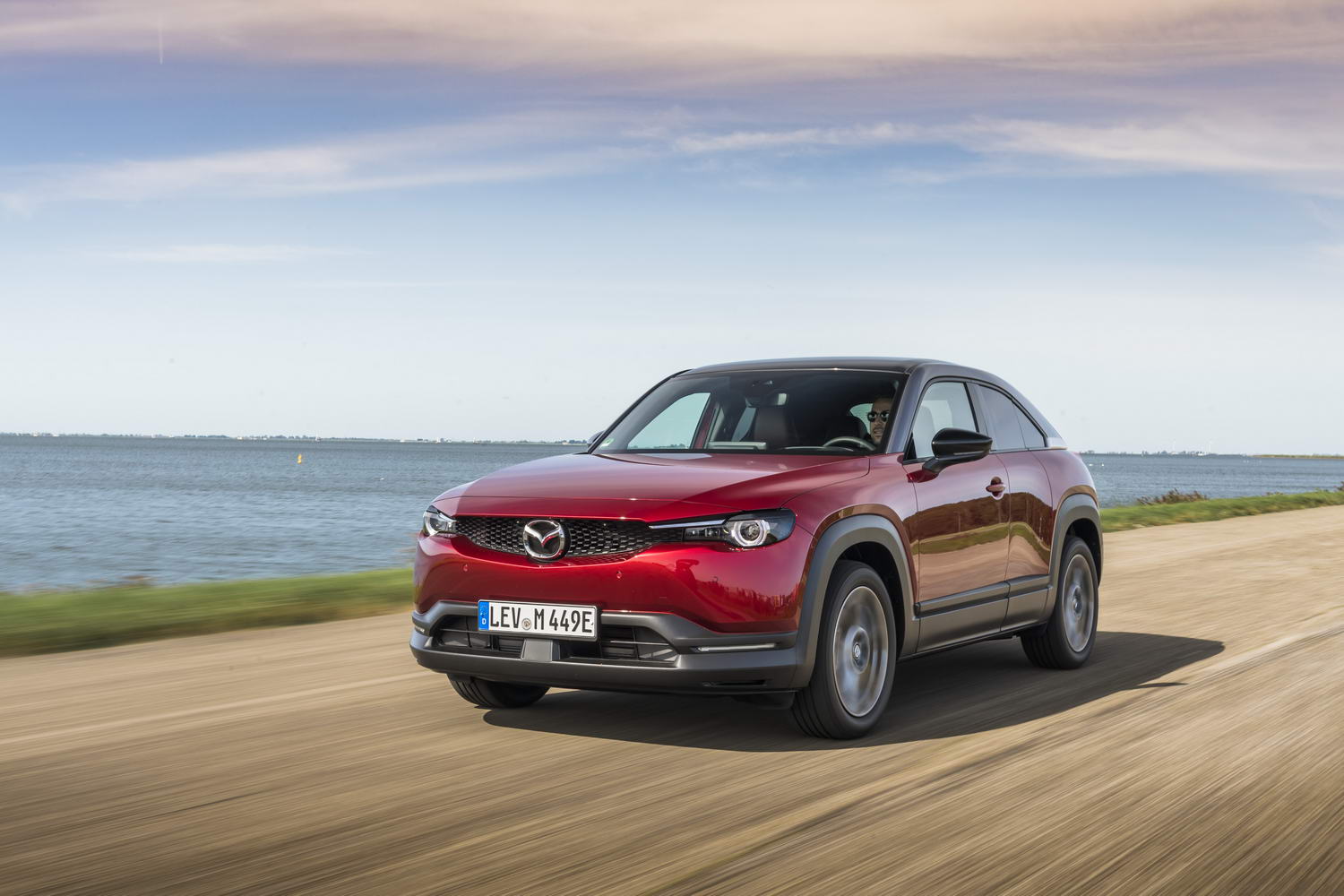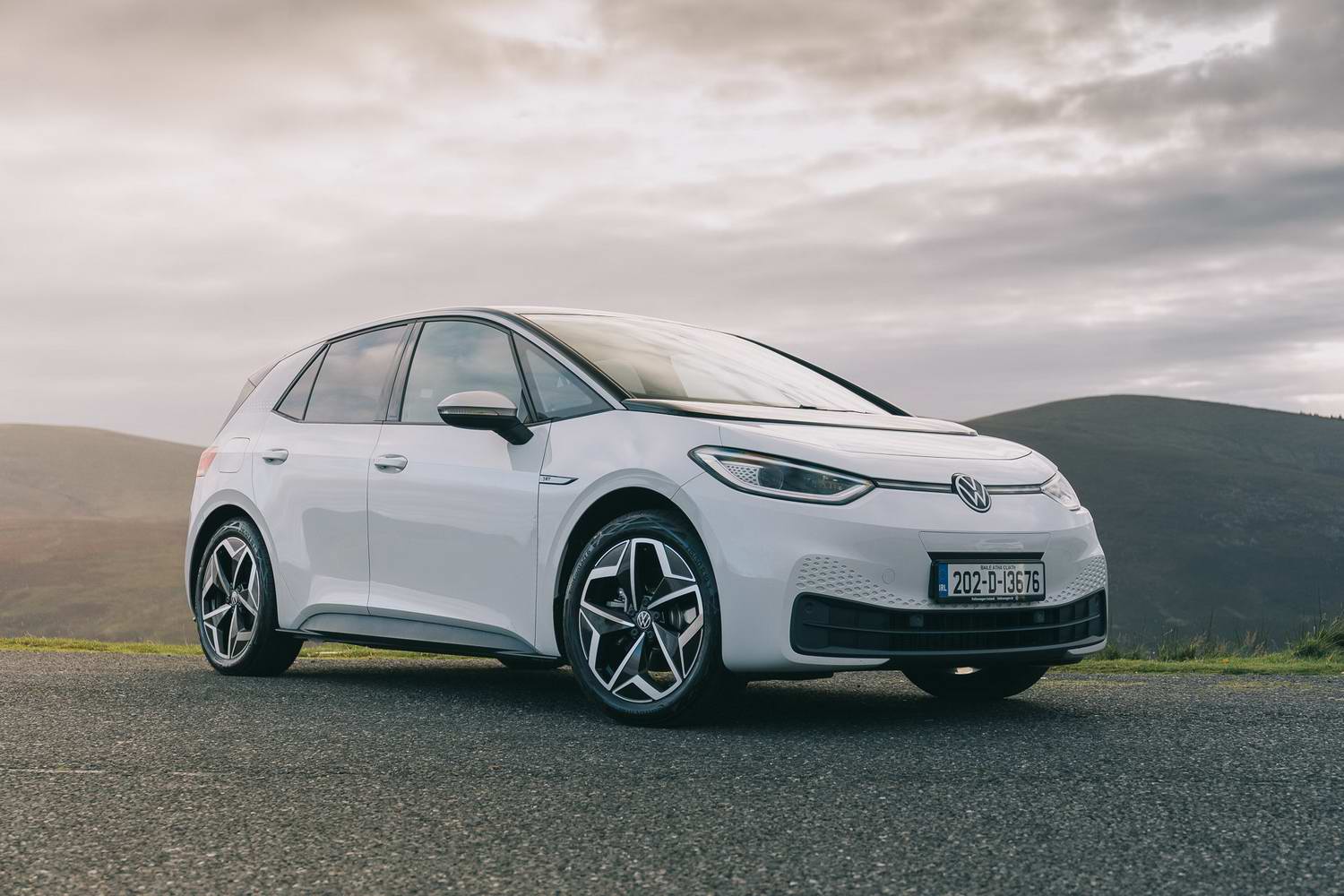Where once there was the DS 3 Crossback, there is now simply the DS 3. Yes, as part of its latest update, the compact SUV with premium pretensions has lost its 'Crossback' suffix, but gained some valuable improvements. New styling features and updated tech are the highlights, but this all-electric E-Tense version has also gained some all-important range and a little more power.
In the metal
It isn't especially easy to tell the new DS 3 apart from the outgoing DS 3 Crossback, primarily because the two cars are based on much the same underpinnings. This is, in industry parlance, more of a 'facelift' than a next-generation model.
At the front, there are new LED headlights as standard, though they fit into the same clusters as before. The daytime running lights - in the form of strips of LEDs running down either side of the front bumper - have been subjected to more of a revamp, but that's still a fairly minor upgrade. As is the refinement to the front grille, which is slightly less chintzy than before and features new aerodynamic blades lower down - something DS says has helped to improve the car's range. Other updates include some new lettering at the rear and new wheel designs, as well as some new paint options.
Inside, the highlights are a new steering wheel and a new touchscreen, which is more of an upgrade. Where the old system looked blocky and clunky, the new iteration feels slicker and more modern.
DS also claims to have tweaked the buttons on the dashboard, but the layout is still a little messy and confusing, with switches in odd places and some strange blank buttons even on the most upmarket models. And because you still often need to use the touchscreen to change the temperature or adjust the driver assistance technology, the buttons don't make the systems any less distracting than before.
Of course, with its premium aspirations, DS has trimmed the seats with some lovely leather, while top-of-the-range models get smart leather on the dash, too. But that contrasts sharply with the hard plastics found elsewhere, including on common touch points such as the glove box and door trims.
More minor issues include the window switches, which are positioned in a bank of buttons either side of the gear selector. While they might look great, it's very easy to find yourself activating the child locks by accident or winding down the wrong window. Switches on the arm rest would have been better. Or at least they would be, were the arm rest not so oddly positioned.
Admittedly, these problems are relatively minor and you'd probably become accustomed to them, but it feels that DS is trying a little too hard to be different - compromising ergonomics in the process. The driving position, for example, seems to be made for somebody with very short legs and very long arms, so most people will either find the wheel a long way away or the pedals too close, depending on how they position the seat.
As before, the DS 3 is best thought of a car for two adults up front and maybe a child in the back. Sitting adults in the rear seats will be a problem on anything more than a short journey thanks to a lack of legroom, and headroom is no better than acceptable. And if you opt for a trim level with black roof lining, the tiny rear windows make the car feel even less spacious. Boot space is a little more competitive, though. At 350 litres, it's roughly the same amount of space as you get in a Volkswagen Polo and should be enough for most DS 3 drivers' needs.
Driving it
This is where things look up for the DS, and particularly for the E-Tense model, which proves to be the most appealing option in the range. As part of the update, the electric DS 3 now gets a slightly larger battery, with a 54kWh capacity, as well as an extra 20hp from its electric motor. That means the little SUV is now sending 156hp to the front wheels, while the extra battery capacity allows it to cover up to 404km on the official economy test, depending on specification.
What's more, the new battery managed to get very close to its official number on our test drive, which covered a mixture of roads and conditions. Admittedly, the temperature was favourable and we didn't spend all that long on the motorway, but we estimated an achievable total range of over 350km in the real world, which isn't bad going.
Almost as appealing was the refinement offered by that powertrain. You expect electric cars to be quiet, but the DS 3 really does isolate you from the outside noise. The motor is almost silent, the road roar is kept to a minimum and there's just a whisper of air rushing around the mirrors, even on the motorway. It's impressive for a car of this size.
As are the driving dynamics. Of course, the heavy battery makes its presence felt, particularly over low-speed bumps, but overall the DS 3 E-Tense is quite comfortable. It can't iron everything out perfectly, and we should caveat all this by saying we drove on smooth European roads, but the 3 rode maturely and sensibly, rounding off any imperfections admirably.
It handles well, too, with surprisingly weighty steering that inspires confidence in the car's abilities and limited body lean despite the comfort. This isn't the car motorists will buy for a sunny Sunday morning blast, but it's capable of providing perfectly adequate enjoyment if you do happen upon a good road - especially if you switch to the more responsive Sport mode.
However, there are a few issues, almost all of which become apparent when you hit the brakes. The first is a slight lack of body control, because although the DS 3 doesn't roll from side to side in corners, it does pitch fore and aft quite a bit. As soon as you start to slow the car with anything more than light braking, you can see the bonnet dip. It isn't a great problem, but it's a little disconcerting at first.
The brakes themselves are balancing the demands of range-extending regenerative braking, which uses the deceleration to charge the battery, and conventional braking, which is concerned only with stopping the car effectively, and unfortunately the pedal feels soft and spongy. There's no sense of how hard you need to push to achieve the desired braking effect, and that isn't ideal when you're trying to drive smoothly.
What you get for your money
DS is yet to confirm Irish prices for the new 3 in petrol or electric guises, but we expect it to be slightly more expensive than the current car, which comes in at just over €43,000 in E-Tense form. We will update this section when we know for sure.
Summary
It's difficult to summarise the new DS 3 without the price tag as a guide, so we'll wait for that before passing full judgement. However, we do know the new DS 3 is, in essence, just an evolution of the outgoing DS 3 Crossback. Yes, the E-Tense electric version comes with a useful improvement in range and the new touchscreen is a notable upgrade, but when all is said and done, it's much the same car underneath. That isn't necessarily a criticism - the DS 3 E-Tense is fine to drive and it's very refined - but it still doesn't feel as luxurious as DS claims. As a result, this car feels at its best in the less upmarket trim levels, where the discrepancy in quality is not so great and the price will be more competitive.

